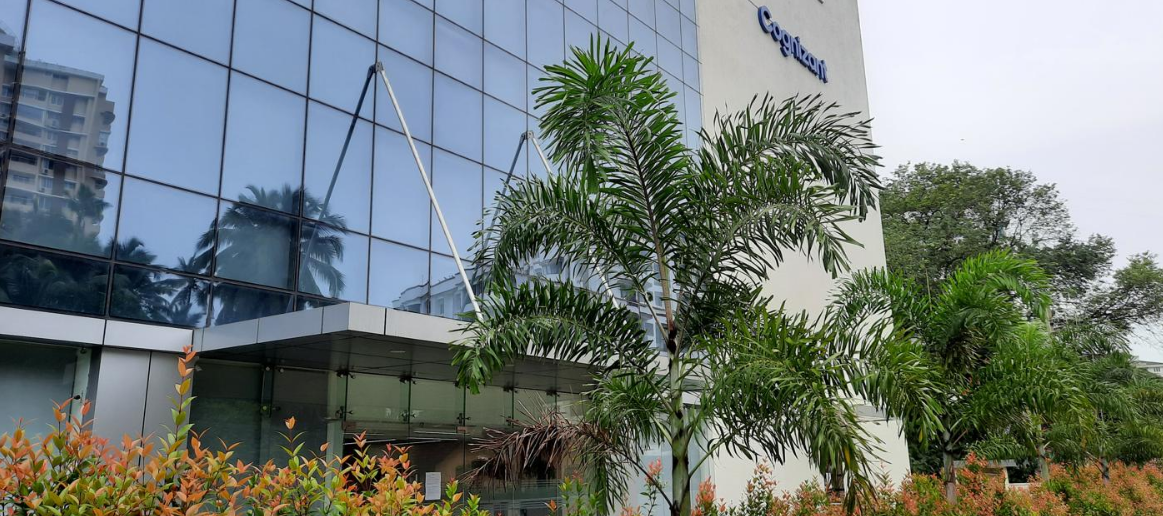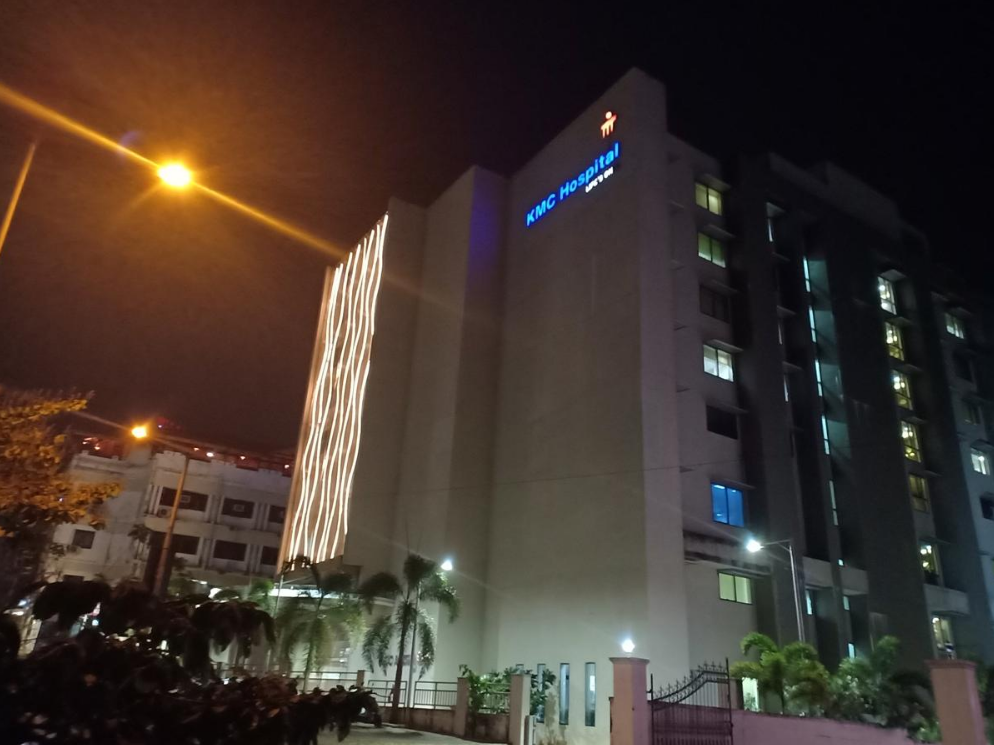
| Version | Summary | Created by | Modification | Content Size | Created at | Operation |
|---|---|---|---|---|---|---|
| 1 | Vivi Li | -- | 6495 | 2022-10-17 01:47:18 |
Video Upload Options
Mangalore (/mæŋɡəˈlɔːr/), officially known as Mangaluru, is a major port city of the Indian state of Karnataka. It is located between the Arabian Sea and the Western Ghats about 352 km (219 mi) west of Bangalore, the state capital, 20 km north of Karnataka–Kerala border, 297 km south of Goa. Mangalore is the state's only city to have all four modes of transport—air, road, rail and sea. The population of the urban agglomeration was 619,664 (As of 2011) national census of India. It is known for being one of the locations of the Indian strategic petroleum reserves. The city developed as a port in the Arabian Sea during ancient times; it has since developed into a major port of India that handles 75 per cent of India's coffee and cashew exports, and is the country's seventh largest container port. Mangalore has been ruled by several major powers, including the Kadambas, Alupas, Vijayanagar Empire, Keladi Nayaks and the Portuguese. The city was a source of contention between the British and the Kingdom of Mysore rulers Hyder Ali and Tipu Sultan, and was eventually annexed by the British in 1799. Mangalore remained part of the Madras Presidency until India's independence in 1947 and was unified with Mysore State (now called Karnataka) in 1956. Mangalore is also the administrative headquarters of the Dakshina Kannada district, and is a commercial, industrial, educational, healthcare and startup hub. This city's International Airport is the second-largest and second-busiest airport in Karnataka. Mangalore City Corporation is responsible for the civic administration, which manages the 60 wards of the city. The city's landscape is characterised by rolling hills, coconut palms, rivers and hard laterite soil. India's first 3D planetarium with 8K resolution display is situated in this city. Mangalore is also included in the Smart Cities Mission list and is among the 100 smart cities to be developed in India. The city has an average elevation of 22 m (72 ft) above mean sea level. Mangalore has a tropical monsoon climate and is under the influence of the southwest monsoon. (As of 2017), Mangalore was ranked the 48th best city to live in the world by a US survey, and the only Indian city in the top 50.
1. Etymology
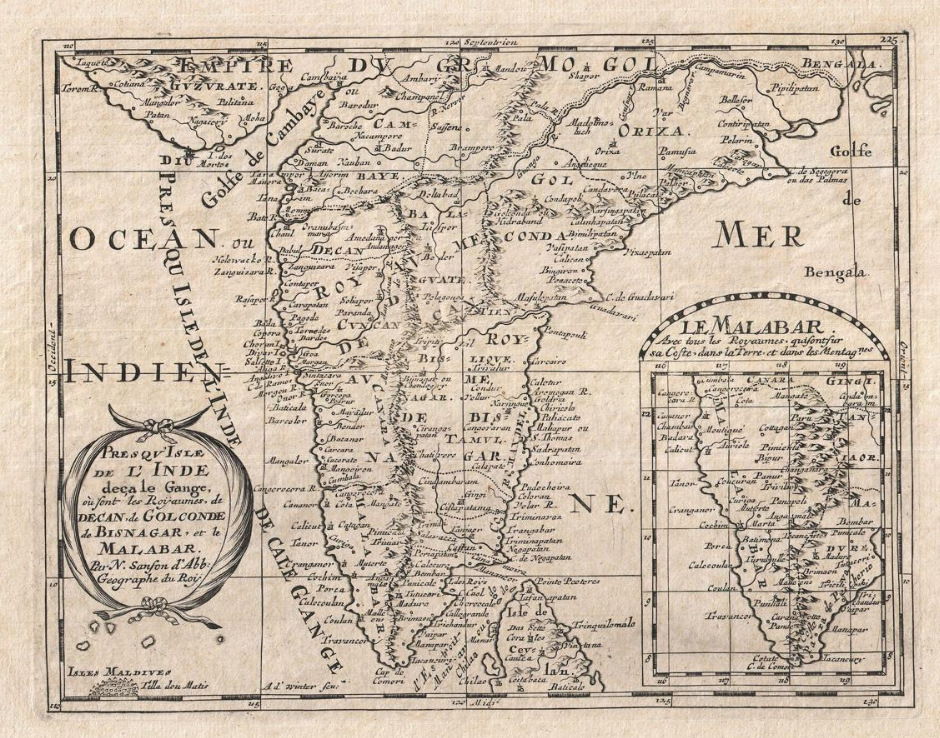
Mangalore was named after the deity Mangaladevi, the presiding deity of the Mangaladevi Temple[1] or a synonym of Tara Bhagvati of the Vajrayana Buddhist sect.[2] According to local legend, a princess named Parimala or Premaladevi from Malabar[3] renounced her kingdom and became a disciple of Matsyendranath, the founder of the Nath tradition.[4] Having converted Premaladevi to the Nath sect, Matsyendranath renamed her Mangaladevi.[3][5] She arrived in the area with Matsyendranath but had to settle near Bolar in Mangalore because she fell ill on the way.[5] When she died, the Mangaladevi temple at Bolar was consecrated in her honour by the local people.[3][6] The city got its name from the temple.[7]
One of the earliest references to the city's name was made in 715 CE by the Pandyan King Chettian, who called the city Mangalapuram.[4] The city and the coastal region were part of the Pandyan Kingdom.[4] According to K.V. Ramesh, President of the Place Names Society of India, Mangaluru was first used in 1345 CE during the Vijayanagar rule.[8] Many shilashasanas (stones) of the Vijayanagar period refer the city as Mangalapura.[8] Before that, during the Alupa dynasty period, it was referred to as Mangalapura (Mangala means 'auspicious').[8] in Kannada language, the city is known as Mangaluru, a reference to Mangaladevi (the suffix uru means town or city).[8] Mangalore was an important centre of Indian Ocean trade on Malabar coast in earlier times.[9] Hence it was also known by the name Manjalūr in Arabic.[9] During British rule from 1799, the anglicised version Mangalore became the official appellation.[8] According to historian George M. Moraes, however, the word Mangalore is the Portuguese corruption of Mangaluru.[10]:2 The city's name appears on maps from as early as the 1652 Sanson Map of India.[11]
Mangalore's diverse communities have different names for the city in their languages.[12] In Tulu, the region's primary spoken language, the city is called Kudla, meaning junction because it is situated at the confluence of the Netravati and Gurupura rivers.[13] In Konkani, Mangalore is referred to as Kodiyal, while the Beary name for the city is Maikala.[14] In Malayalam, the city is called "Mangalapuran". Mangalore was officially renamed to "Mangaluru" by the Karnataka government on 1 November 2014.[15]
2. History
2.1. Early and Medieval History
Mangalore's historical importance is highlighted by the many references to the city by foreign travellers.[16] During the first century CE, the Roman historian Pliny the Elder made references to a place called "Nitrias" as an undesirable place for disembarkation because of the pirates who frequented its vicinity,[17] while Greek second-century historian Ptolemy referred to a place called "Nitra".[18] These remarks were probably referring to the Netravati River that flows through Mangalore.[18] In his sixth-century work Christian Topography, Cosmas Indicopleustes, a Greek monk, mentions Malabar as the chief seat of the pepper trade and Mangarouth (port of Mangalore) as one of the five pepper markets that exported pepper.[19][20]
According to Kerala Muslim tradition, the Masjid Zeenath Baksh at Mangalore is one of the oldest mosques in Indian subcontinent.[21] According to the Legend of Cheraman Perumals, the first Indian mosque was built in 624 AD at Kodungallur with the mandate of the last the ruler (the Cheraman Perumal) of Chera dynasty, who left from Dharmadom to Mecca and converted to Islam during the lifetime of Prophet Muhammad (c. 570–632).[22][23][24][25] According to Qissat Shakarwati Farmad, the Masjids at Kodungallur, Kollam, Madayi, Barkur, Mangalore, Kasaragod, Kannur, Dharmadam, Panthalayani (Koyilandy), and Chaliyam, were built during the era of Malik Dinar, and they are among the oldest Masjids in Indian Subcontinent.[26] It is believed that Malik Dinar died at Thalangara in Kasaragod town.[27] Three of them, Mangalore, Barkur, and Kasaragod lie in Tulu Nadu.[27]
Mangalore is considered the heart of a distinct multi-linguistic cultural region, the homeland of the Tulu-speaking people.[28] In the third century BCE, the town formed part of the Maurya Empire, which was ruled by the Buddhist emperor Ashoka of Magadha.[3] From the third to the sixth century CE, the Kadamba dynasty, whose capital was based in Banavasi in North Canara, ruled over the entire Canara region as independent rulers.[29] From the middle of the seventh century to the end of the 14th century, the South Canara region was ruled by its native Alupa rulers,[30]:17[31][32] who ruled over the region as feudatories of major regional dynasties like the Chalukyas of Badami, Rashtrakutas of Manyakheta, Chalukyas of Kalyani and Hoysalas of Dwarasamudra.[30] An Old Malayalam inscription (Ramanthali inscriptions), dated to 1075 CE, mentioning king Kunda Alupa, the ruler of Alupa dynasty of Mangalore, can be found at Ezhimala (the former headquarters of Mushika dynasty) near Cannanore, in the North Malabar region of Kerala.[33] During the 1130s and 1140s, during the reign of the Alupa king Kavi Alupendra (1110–1160), the city was home to the Tunisian Jewish merchant Abraham Ben Yiju.[34] The Moroccan traveller Ibn Battuta, who visited Mangalore in 1342, referred to it as Manjarur and stated the town was situated on a large estuary called the Estuary of the wolf, which was the greatest estuary in the country of Malabar.[35][36]:30 By 1345, the Vijayanagara rulers brought the region under their control.[30]:17
During the Vijayanagara period (1345–1550), South Canara was divided into Mangalore and Barkur rajyas (provinces), and two governors were appointed to look after each of them from Mangalore and Barkur.[30][37] Often a single governor ruled over both Mangalore and Barkur rajyas, and when the authority passed to the Keladi rulers (1550–1763), they had a governor at Barkur only.[30]:19 In 1448, Abdur Razzaq, the Persian ambassador of Sultan Shah Rukh of Samarkand, visited Mangalore en route to the Vijayanagara court.[36][38]:31 The Italian traveller Ludovico di Varthema, who visited India in 1506, said he saw nearly sixty ships laden with rice ready to sail from the port of Mangalore.[30]:20
2.2. Foundation and Early Modern History
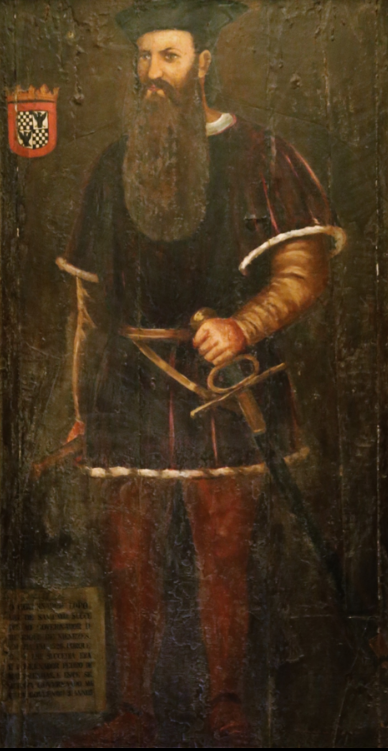
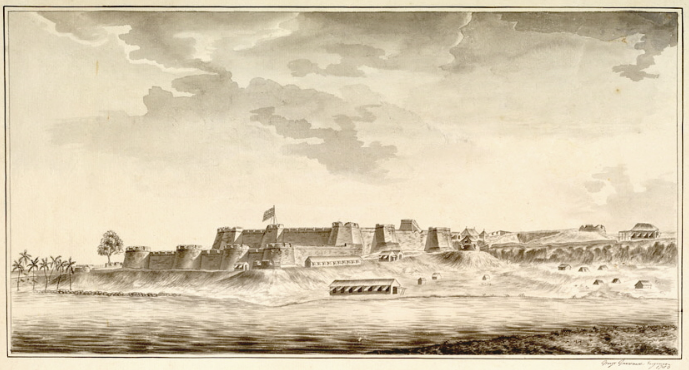
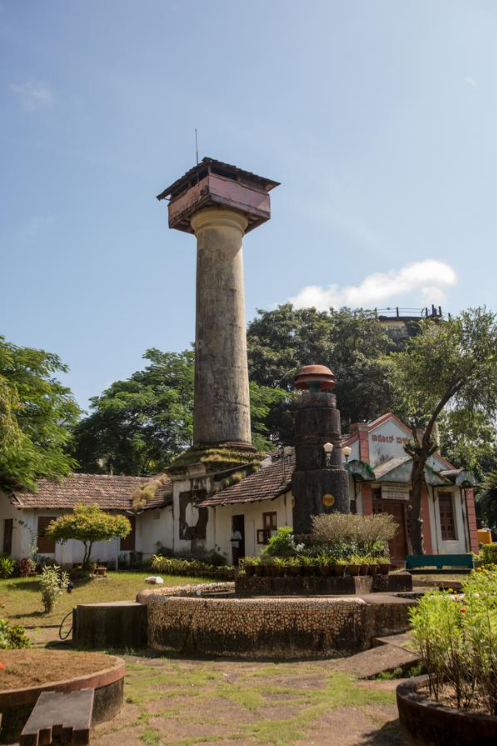
After the disintegration of the Vijaynagara Empire in 1565, the rulers of Keladi attained greater power in dealing with the coastal Canara region.[30]:27 They continued the Vijayanagara administrative system[30] and the provinces of Mangalore and Barkur continued to exist.[32][49] The governor of Mangalore also acted as the governor of the Keladi army in his province.[30]:30 The Italian traveller Pietro Della Valle visited here in 1623–1624.[50] In 1695, Arabs burnt the town in retaliation to Portuguese restrictions on Arab trade.[40]
In 1763, Hyder Ali, the de facto ruler of the Kingdom of Mysore, conquered Mangalore,[51] which was brought under his administration until 1767. Mangalore was ruled by the British East India Company from 1767 to 1783,[52] but Hyder Ali's son Tipu Sultan subsequently took it from their control in 1783 and renamed it "Jalalabad".[53][54] The Second Anglo–Mysore War ended with the signing of the Treaty of Mangalore by Tipu Sultan and the British East India Company on 11 March 1784.[55] After the defeat of Tipu at the Fourth Anglo–Mysore War, the city remained under British control, headquartering South Canara district under the Madras Presidency.[8][56][57]
Francis Buchanan, a Scottish physician who visited Mangalore in 1801, said the city was a prosperous port with plentiful trade.[58] The main commodity of export was rice; it went to Muscat, Bombay, Goa and Malabar.[30] Supari (Betel-nut) was exported to Bombay, Surat and Kutch.[30] Sandalwood and black pepper were exported to Bombay.[30]
Local capital was mainly invested in land and money lending, leading to the regional development of banking because the British colonial government did not support industrialisation there.[59] After European missionaries arrived in the early 19th century, educational institutions and modern industries modelled on European ones were developed in the region.[60] The opening of the Lutheran Swiss Basel Mission in 1834 was an important step towards industrialisation.[61] Missionaries set up printing presses, textile mills and factories that made Mangalore tiles.[28] When Canara (part of the Madras Presidency until this time) was split into North Canara and South Canara in 1859, Mangalore became the headquarters of South Canara,[62]:5 which remained under Madras Presidency while in 1862, North Canara was transferred to the Bombay Presidency.[62]:6
2.3. Later Modern and Contemporary History
On 23 May 1866, a municipal council for Mangalore with responsibility for civic amenities and urban planning was mandated by the Madras Town Improvement Act (1865).[10]:178 The Italian Jesuits who arrived in the city in 1878, played an important role in the city's education, economy, health and social welfare.[63] Mangalore was linked to the Southern Railway in 1907 and the subsequent proliferation of motor vehicles in India further increased trade and communication between the city and the rest of the country.[64] Mangalore was a major source of educated workers to Bombay, Bangalore and the Middle East by the early 20th century.[28]
The States Reorganisation Act (1956) led to Mangalore being incorporated into the newly created Mysore State, which was later renamed Karnataka.[65][66]:415 Mangalore is the seventh-largest port of India, giving the state access to the Arabian Sea coastline.[28][67] Between 1970 and 1980, Mangalore experienced significant growth with the opening of New Mangalore Port in 1974 and commissioning of Mangalore Chemicals & Fertilizers Limited in 1976.[68][69] The late 20th and early 21st centuries saw Mangalore develop as a commercial and petrochemical hub.[70][71]
3. Geography
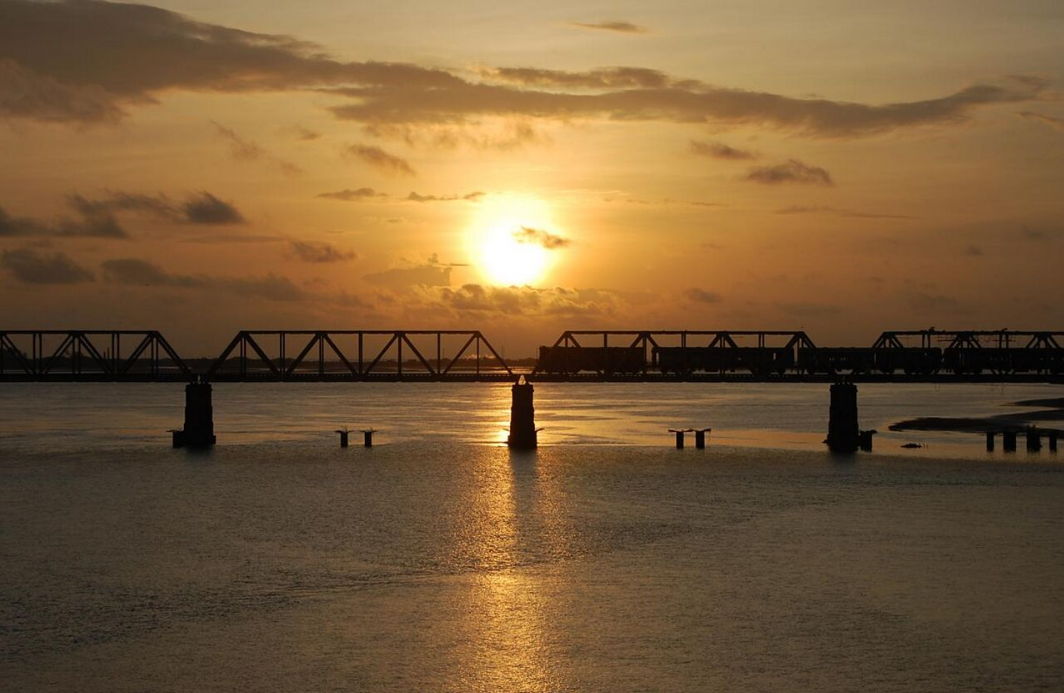
Mangalore is located on the western coast of India at 12°52′N 74°53′E / 12.87°N 74.88°E / 12.87; 74.88 in Dakshina Kannada district, Karnataka state.[72] It has an average elevation of 22 m (72 ft) above mean sea level.[73] The city is the administrative headquarters of Dakshina Kannada district and is the state's largest coastal urban centre.[74]
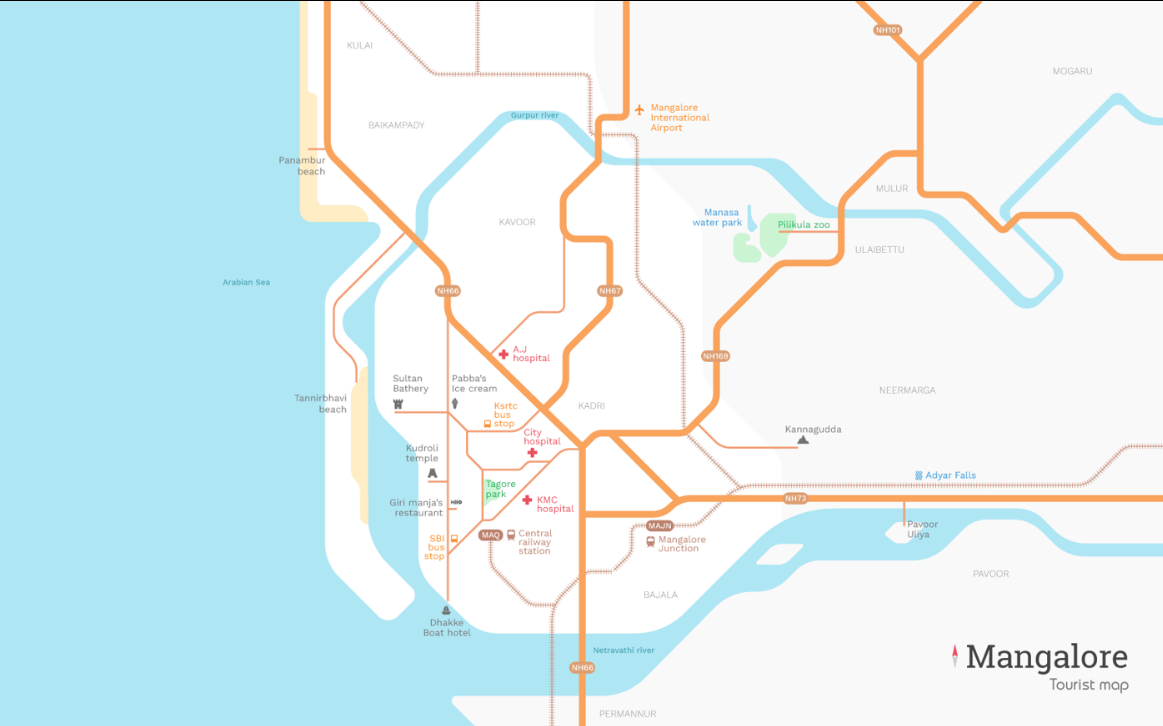
Mangalore is bounded by the Arabian Sea to its west and by the Western Ghats to its east.[72] As a municipal entity, the city spans 170 km2 (65.64 sq mi).[75] The Netravati and Gurupura rivers encircle the city; the Gurupura flows around the north and the Netravati flows around the south of the city.[76] The rivers form an estuary in the south-western region of the city, from where they flow into the Arabian Sea.[77] Coconut, palm and ashoka trees comprise the primary vegetation of the city.[76]
The city's topography consists of a plain that stretches up to 30 km (18.64 mi) from the coast and undulating, hilly terrain towards the east near the Western Ghats.[78] The local geology is characterised by hard laterite in hilly tracts and sandy soil along the seashore.[74] The Geological Survey of India has identified Mangalore as a moderately earthquake-prone urban centre and categorised the city in the Seismic III Zone.[79]
3.1. Climate
Under the Köppen climate classification, Mangalore has a tropical monsoon climate and is under the direct influence of the Arabian Sea branch of the southwest monsoon.[80] It receives about 95 per cent of its total annual rainfall between May to September but remains extremely dry from December to March.[80] Humidity is approximately 75 per cent on average and peaks during June, July and August.[81] The maximum average humidity is 93 per cent in July and average minimum humidity is 56 per cent in January.[81] Mangalore experiences moderate to gusty winds during day time and gentle winds at night.[82] The driest and least humid months are from December to February.[83] During this period, temperatures during the day stay below 34 °C (93 °F) and drop to about 19 °C (66 °F) at night.[84] The lowest temperature recorded at Panambur is 15.6 °C (60 °F) on 8 January 1992 and at Bajpe it is 15.9 °C (61 °F) on 19 November 1974.[85] According to the India Meteorological Department (IMD), the temperature in Mangalore has never reached 40 °C (104 °F).[86] The summer gives way to the monsoon season, when the city experiences the highest precipitation of all urban centres in India due to the influence of the Western Ghats.[87] The rains subside in September but there is occasional rainfall in October.[88] The highest rainfall recorded in a 24-hour period is 330.8 mm (13 in) on 22 June 2003.[85] In 1994, Mangalore recorded its highest annual rainfall at 5,018.52 mm (198 in).[89]
4. Economy
Industrial, commercial, agricultural processing and port-related activities comprise this city's economy.[90] The New Mangalore Port is India's seventh-largest container port.[67] It handles 75 per cent of India's coffee exports and the bulk of its cashew nuts.[91] The Mangalore Customs Commissionerate collected a revenue of ₹4.47 billion (US$62.67 million) during 2012–13[92] and ₹27.91 billion (US$391.30 million) (As of 2018).[93] During 2012–13, MRPL and MCF contributed ₹501 million (US$7.02 million) and ₹373 million (US$5.23 million) respectively, to the state's revenue.[92] Dakshina Kannada district has the highest percentage of workers employed in industry and the second-highest industry-to-district GDP ratio in Karnataka.[94] Imports through New Mangalore port include crude oil, edible oil, liquefied petroleum gas and timber.[95]
The city's major chemical industries include BASF,[97] Mangalore Refinery and Petrochemicals Limited (MRPL), Mangalore Chemicals and Fertilizers (MCF), Kudremukh Iron Ore Company Ltd. (KIOCL),[98] Hindustan Petroleum Corporation Ltd. (HPCL),[99] Bharat Petroleum Corporation Ltd. (BPCL),[100] Indian Oil Corporation Limited (IOCL),[101] Total Oil India Limited[102] and Hindustan Unilever.[103] The Indian government has built 5.33 million tons of strategic crude oil storage at Mangalore and Padur to ensure energy security.[104][105] Out of the 5 million metric tonnes (MMT) storage, 1.5 MMT is stored at Mangalore.[106] Bharati Shipyard Ltd (BSL) (now known as Bharati Defence and Infrastructure Limited) has established a shipbuilding site near Tannirbavi in Mangalore.[107][108]
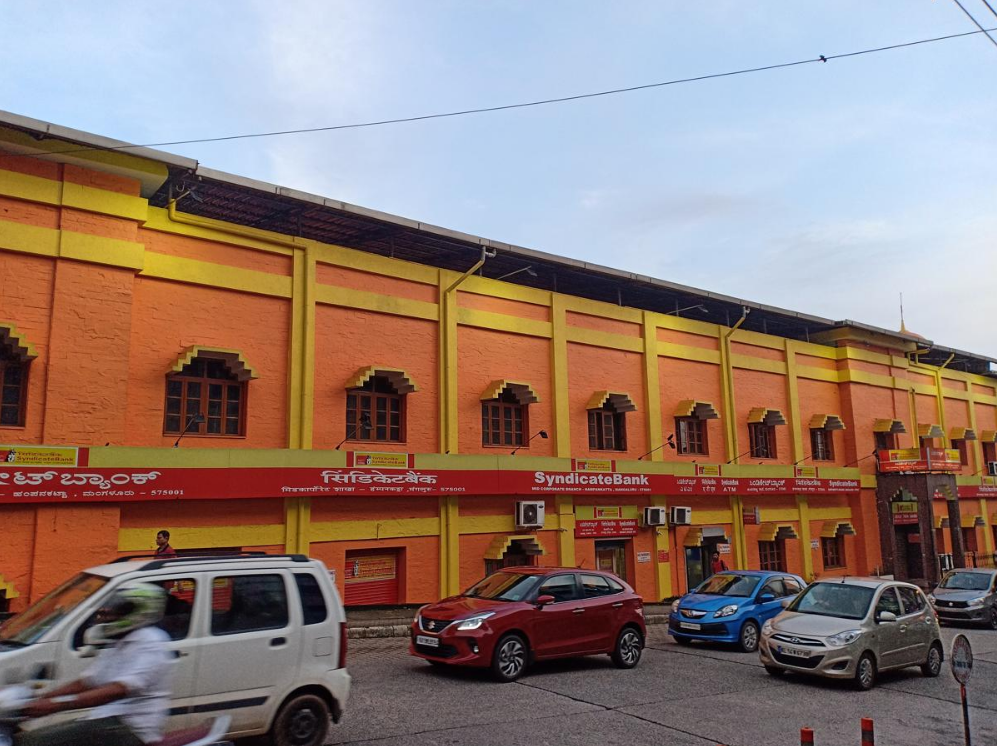
Major information technology (IT) and outsourcing companies like Infosys,[109] Cognizant[110] and Thomson Reuters[111] have their offices at Mangalore.[91] Mphasis' Business Process Outsourcing (BPO) has a branch in this city.[112] IT parks Export Promotion Investment Park (EPIP) at Ganjimutt[113] and Special Economic Zone (SEZ) near Mangalore University have been constructed.[114] An IT park called Soorya Infratech park is situated in Mudipu.[115] Tata Consultancy Services (TCS) has planned to invest ₹500 crore (US$70.10 million) and setup its office at Karnad near Mangalore.[116][117] KEONICS has planned to setup an IT park at Derebail in Mangalore, similar to Electronic City, spanning an area of 100 acres.[118][119][120]
Centre for Entrepreneurship Opportunities and Learning (CEOL) is a startup incubation centre situated in the city.[121] Corporation Bank,[122] Canara Bank[123] and Vijaya Bank[124] were the three nationalised banks established in Mangalore during the first half of the 20th century. Mangalore is the headquarters of Corporation Bank and Karnataka Bank.[125] The Mangalore Catholic Co-operative Bank (MCC Bank) Ltd,[126] Mangalore Cooperative Town Bank Ltd[127] and SCDCC Bank[128] were the scheduled banks established in Mangalore.
Syngene International, a contract research arm of Biocon, has set up its manufacturing plant at Mangalore.[129][130] Old Mangalore Port is a fishing port located at Bunder, Mangalore, where a large number of mechanised boats anchor.[131] The traffic at this port was 122,000 tonnes during the years 2003–04.[132] New Mangalore Port handled over 100,000 Twenty-foot equivalent units of containers during the years 2017–18.[133] Fishing is a traditional occupation and the products are sold in the surrounding regions.[134] Mangalorean firms have a major presence in the tile, beedi, coffee and cashew nut industries although the tile industry has declined because concrete is preferred in modern construction.[90][91] The Albuquerque tile factory in Mangalore is one of India's oldest red-roof-tile manufacturing factories.[135][136] The city's suburb Ullal produces hosiery and coir yarns while beedi rolling is an important source of revenue to many of the city's residents.[90]
5. Demographics
According to the 2011 Indian census, the population of Mangalore city was 484,785,[138] and the metropolitan area had a population of 619,664.[139] The male literacy rate was 96.49 per cent and the female literacy rate was 91.63 per cent.[139] About 8.5 per cent of the population was under the age of six years.[139] The death rate and Infant mortality rate were at 3.7 per cent and 1.2 per cent respectively.[140] About 7726 people resided in slums in Mangalore city, which was 1.55 per cent of the total population.[141][142] The Human Development Index (HDI) of Mangalore city was 0.83 (As of 2015).[143]
5.1. Religions
Hinduism is the largest religion in Mangalore, and Devadiga, Mogaveera, Billavas, Ganigas, Bunts, Vishwakarma, Padmashali, Brahmins and Daivadnyas are the major communities among Hindus.[144][145] Christians form a sizeable section of Mangalorean society; Mangalorean Catholics comprise the city's largest Christian community.[146] Protestants in Mangalore typically speak Tulu and Kannada.[147] Anglo-Indians were also part of the Mangalorean Christian Community.[148] Mangalore has one of the highest percentage of Muslims in Karnataka cities.[149] Most Muslims in Mangalore are Bearys who speak the Beary language.[150] Most of them follow the Shafi'i school of Fiqh (Islamic Jurisprudence).[151] Mangalore also has a small group of Urdu-speaking Dakhini Muslims.[152] The Masjid Zeenath Baksh at Mangalore is one of the oldest mosques in Indian subcontinent.[22][23][24][25][26]
5.2. Languages
Mangalore is a multi-lingual city where several prominent regional languages such as Tulu, Konkani, Kannada and Beary are spoken.[12] The city is known as Kudla in Tulu, Kodial in Konkani, Maikāla in Beary, Mangalapuram in Malayalam, and Mangaluru in Kannada.[12] Among most of the residents of the city, Kudla is the most commonly used name for it.[12] There are also smaller communities of Tuluva Jains,[153] Gujaratis,[28] Tamils[154] and Marathis.[155] Tulu is a predominant language in Mangalore, Kannada is the administrative language of Mangalore, but the city is multi-cultural. According to the 2011 Census, Tulu is spoken as a first language by 33.7% of the population, Konkani by 14.03%, Kannada by 12.45%, Malayalam by 5.64% and other languages by 34.18%.[137] Unlike other cities in Karnataka where Kannada is a primary language, Kannada is the third most spoken language, Tulu is predominant language in Mangalore and Konkani is the second most spoken language in Mangalore.
6. Government and Public Services
6.1. Civic Administration
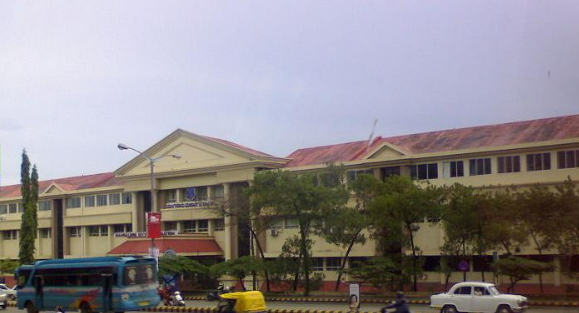
Mangalore has a city area of 170 km2 (65.64 sq mi).[75] Municipal limits begin at Surathkal in the north, Netravati River bridge in the south, the western coast and Vamanjoor in the east.[156] Mangalore City Corporation (MCC), which came into existence in 1980, is the municipal corporation in charge of the city's civic and infrastructural assets.[157] The MCC council consists of 60 elected representatives, called corporators; one from each of the city's 60 wards.[158][159] A corporator from the ruling majority party is selected as a Mayor.[160] MCC's headquarters are at Lalbagh.[156] Mangalore Urban Development Authority (MUDA) manages the planning, urban growth and expansion of the city.[161][162][163] The District Commissioner is the chairperson of MUDA.[164] The 44 projects listed as part of the Smart Cities Mission programme are managed by Mangalore Smart City Limited (MSCL).[165]
Until the Delimitation commission's revision of the Lok Sabha and the legislative constituencies, Mangalore contributed two members to the Lok Sabha; one for the southern part of the city that fell under the Mangalore Lok Sabha constituency and another for the northern part of the city that fell under the Udupi Lok Sabha constituency.[166] After the delimitation of parliamentary constituencies in 2008, Mangalore Lok Sabha constituency was replaced with Dakshina Kannada Lok Sabha constituency, resulting in Mangalore being represented by one Member of Parliament (MP).[167][168] Additionally, Mangalore sends three members to the Karnataka Legislative Assembly from Mangalore City South, Mangalore City North and Mangalore.[169] The Mangalore City Police Department is headed by a Commissioner of Police.[170] Mangalore is also the headquarters of the Western Range Police, which covers the western districts of Karnataka and is headed by an Inspector General of Police (IGP).[171]
6.2. Healthcare
The city is served by various hospitals such as the KMC Hospitals, Father Muller Charitable Institutions (FMCI),[173] AJ Hospital and Wenlock Hospital.[174] Wenlock Hospital, a teaching hospital of KMC Mangalore has around 1000 beds and caters to the healthcare needs of the neighboring districts.[175] Mangalore is a hub for medical tourism and receives patients from foreign countries.[176] During 2017–19, around 240 foreign nationals have availed treatment in three hospitals across the city.[176] Of these, approximately 50 per cent of the patients arrived in 2018 and 2019. KMC, AJ and Yenepoya Hospitals have received the highest number of foreign patients, including those from the USA.[176] At Yenepoya Hospital, 68 foreign nationals have availed treatment during 2017–19.[176] The largest inflow of foreign patients into Mangalore is from the Gulf countries. Deralakatte is a main healthcare hub of Mangalore.[176]
6.3. Utility Services
In Mangalore, electricity is regulated by the Karnataka Power Transmission Corporation Limited (KPTCL) and distributed through Mangalore Electricity Supply Company (MESCOM).[177][178][179] Major state-owned enterprises such as Mangalore Refinery and Petrochemicals Limited (MRPL) and Mangalore Chemicals & Fertilizers (MCF) operate their own captive power plants.[180][181]
Potable water is supplied to the city from a vented dam that was constructed across the Netravati River at Thumbe, 14 km (9 mi) from Mangalore.[182][183][184] The Karnataka Urban Development and Coastal Environment Management Project (KUDCEMP) aims to improve safe water supply systems, and reduce leakage and losses in the city's distribution system.[183] The distribution and rehabilitation of the drinking water in Mangalore are handled by the French company Suez Environnement.[185][186] The city's official refuse disposal site is in Vamanjoor.[187] The city generates an average of 175 tonnes per day of waste, which is handled by the MCC's health department.[188]
Mangalore is the headquarters of the Dakshina Kannada Telecom District, the second largest telecom district in Karnataka.[189] Fixed-line telecom services are provided alongside GSM and Code division multiple access (CDMA) mobile services.[190] Prominent broadband internet service providers in the city include Airtel and DataOne by Bharat Sanchar Nigam Limited.[191]
7. Education
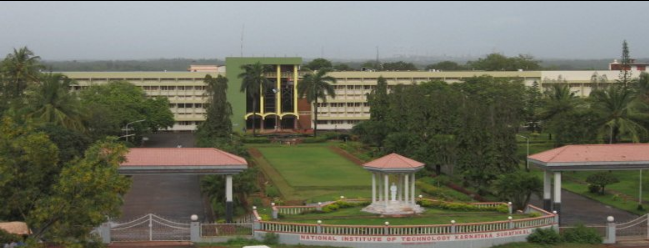
The districts of Dakshina Kannada and Udupi are considered to be a major education corridor in India. Deralakatte is a University and Medical town in Mangalore where Universities like Mangalore University, Nitte, Yenepoya, Father Mullers and Kanachur are situated.[192] In schools and colleges below university-level, the media of instruction are mostly English and Kannada, and English is used for teaching in universities. [193] Schools and colleges in Mangalore are either government-run or are run by private trusts and individuals.[194][195] Schools are affiliated with either the Karnataka State Board, Indian Certificate of Secondary Education (ICSE),[196] the Central Board of Secondary Education (CBSE)[197] and the National Institute of Open Schooling (NIOS) boards.[198]
Below are some of the earliest schools and colleges established in Mangalore, and their years of establishment
- Basel Evangelical School (1838)[199]
- Milagres School (1848)[200]
- Rosario High School (1858)[201]
- University College (1868)[202]
- St. Ann's High School (1870)[203]
- St. Aloysius College (1879)[204]
- Canara High School (1891)[205]
- St. Agnes PU College (1921)[206]
- St. Agnes College (Autonomous) (1921)[207]
- Sacred Hearts' School (1943)[208]
- Cascia High School (1946)[209]
- Carmel School (1951)[210]
Kasturba Medical College, which was established in 1953, was India's first private medical college and Manipal College Of Dental Sciences (MCODS) was established in the city in 1987.[211] A public library run by the Corporation Bank is located at Mannagudda.[212] Mangalore University was established on 10 September 1980[213] to fulfil the higher-education needs of Dakshina Kannada, Udupi and Kodagu districts.[214] It is a National Assessment and Accreditation Council (NAAC)-accredited, four-star-level institution.[215] NITK houses South India's first Regional Academy Centre for Space (RAC-S), launched by ISRO.[216]
8. Transport
Mangalore is the only city in Karnataka to have all modes of transport—air, road, rail and sea.[217]
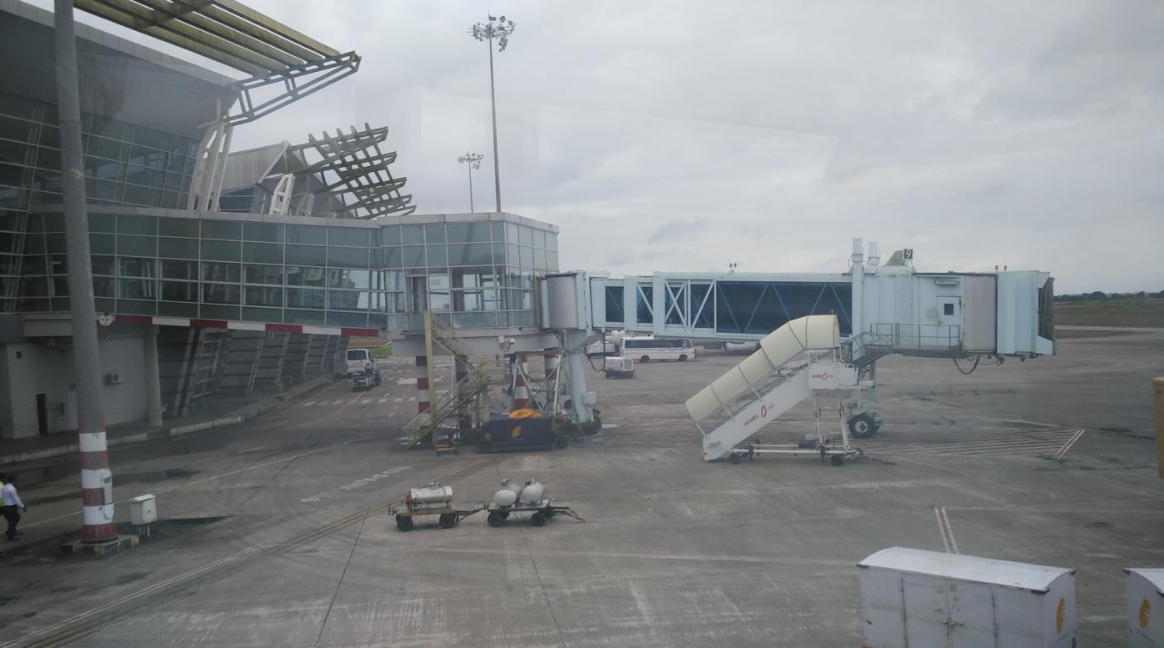
Mangalore International Airport (IATA: IXE, ICAO: VOML) is located near Bajpe-Kenjar about 13 km (8 mi) north-east of Mangalore city centre.[218] It operates regular scheduled flights to major cities in India and the Middle East.[219][220] It is the second-largest and second-busiest airport in Karnataka.[221][222] New terminals and runways at the airport accommodate both cargo and passenger requirements.[223] This airport is accredited by the Airports Council International (ACI) under the Airport Health Accreditation (AHA) programme.[224] State-government-run buses connect the city with the airport.[225]
Five National Highways pass through Mangalore.[226] NH-66 (previously known as NH-17[227]), which runs from Panvel, Maharashtra, to Kanyakumari, Tamil Nadu, passes through Mangalore in a north–south direction.[228] NH-75 (previously known as NH-48) runs eastward to Bangalore and Vellore.[229] NH-169 (previously known as NH-13) runs north-east from Mangalore to Shimoga.[230] NH-73, a 315 km (196 mi)-long National Highway connects Mangalore to Tumkur.[231] NH-275 also connects Mangalore with Bangalore via Mysore.[232] National Highways Authority of India (NHAI) is upgrading the national highways connecting New Mangalore Port to Surathkal on NH-66 and BC Road junction on NH-75.[233] Under the port connectivity programme of the National Highways Development Project (NHDP), a 37.5 km (23 mi) stretch of these highways will be widened from two lanes to four.[234]
Mangalore's city bus service is dominated by private operators, which operate routes that extend beyond the city's boundary. Bus services from Mangalore are operated by the Dakshina Kannada Bus Operators' Association (DKBOA) and Canara Bus Operators Association (CBOA).[235][236] Karnataka State Road Transport Corporation (KSRTC) also runs bus services in the city.[237] Two distinct sets of routes for the buses exist; city routes are covered by city buses while intercity routes are covered by service and express buses.[238] KSRTC also operates long-distance bus services that connect Mangalore with other parts of the state.[239] KSRTC JnNurm green city buses operate within the city limits.[240]
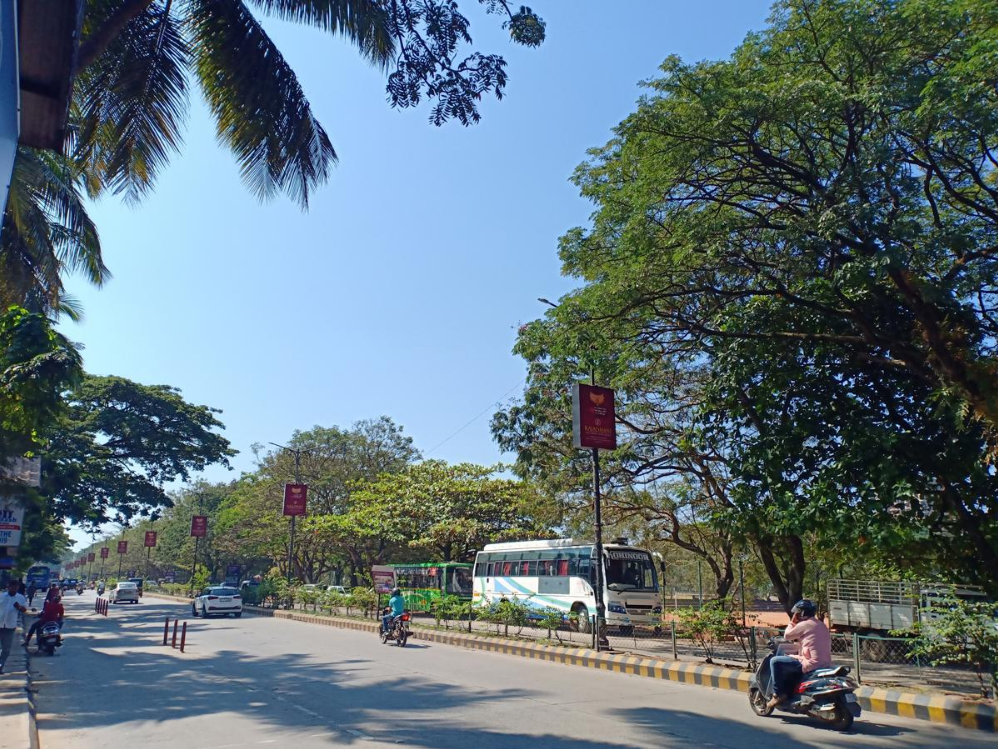
Rail connectivity in Mangalore was established in 1907;[241] the city was the starting point of India's longest rail route.[64] The city has three railway stations; Mangalore Central at Hampankatta, Mangalore Junction at Padil and Surathkal railway station.[242] A railway track built through the Western Ghats connects Mangalore with Sakleshpur and Hassan.[243] The broad gauge track connecting Mangalore to Bangalore via Hassan was opened to freight traffic in May 2006[244] and passenger traffic in December 2007.[245] Mangalore is also connected to Chennai, Mumbai , Pune, Bhatkal, Karwar, Surat, Ajmer and Margao through the Konkan Railway.[246][247]
Mangalore Harbour has shipping, storage and logistical services while New Mangalore Port handles dry, bulk and fluid cargoes,[248] and is equipped to handle petroleum oil lubricants, crude products and LPG containers.[249] The Indian Coast Guard has a station at New Mangalore Port.[250] This artificial harbour is India's seventh largest container port and the only major port in Karnataka.[67][251] Electronic visa (e-visa) facilities are available for travellers arriving in India at New Mangalore Port.[252]
9. Culture
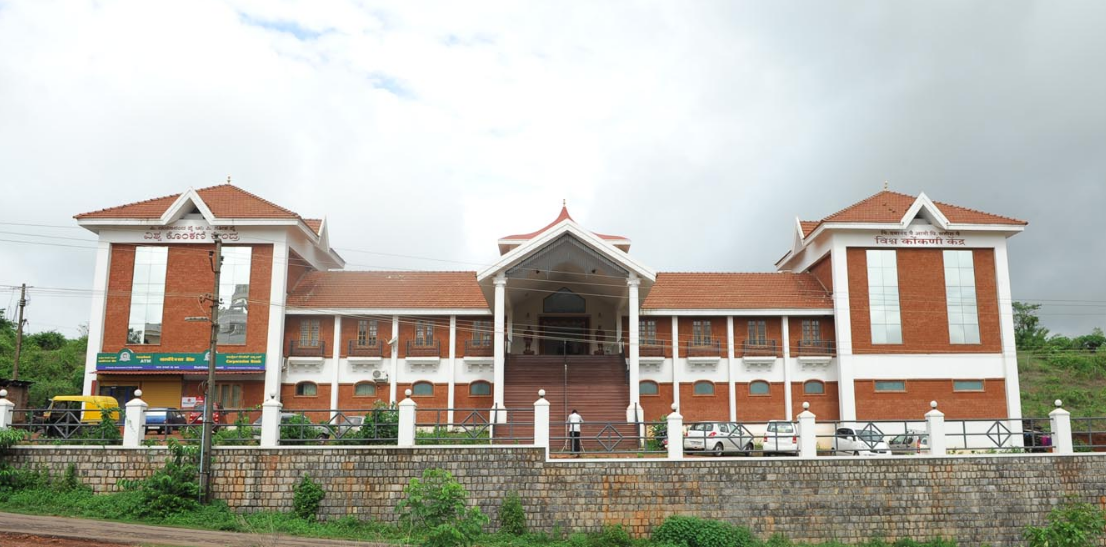
9.1. Music and Dance
Many classical dance forms and folk art are practised in Mangalore. Yakshagana is a night-long dance and drama performance[253] while Pilivesha (tiger dance), a folk dance unique to the city, is performed during Dasara and Krishna Janmashtami.[254] Karadi Vesha (bear dance) is another well-known dance that is performed during Dasara.[255]
Paddanas, ballad-like epics passed on verbally through generations, are sung by a community of impersonators in Tulu and are usually accompanied by the rhythmic drum beats.[255] The Bearys' unique traditions are reflected in folk songs such as Kolkai (sung during Kolata, a valour folk-dance during which sticks are used as props), Unjal Pat (traditional lullaby), Moilanji Pat and Oppune Pat (sung at weddings).[256] The Evkaristik Purshanv (Konkani: Eucharistic procession) is an annual Catholic religious procession that is held on the first Sunday of each year.[255]
9.2. Festivals
Most of the popular Indian festivals are celebrated, the most important being Dasara, Diwali, Christmas, Easter, Eid and Ganesh Chaturthi.[257][258] Kodial Theru, also known as Mangaluru Rathotsava (chariot festival) is unique to the Goud Saraswat Brahmin community and is celebrated at the city's Sri Venkatramana Temple.[259]
The Mangalore Catholic community's unique festivals include Monti Fest (Mother Mary's feast), which celebrates the Nativity feast and the blessing of new harvests.[260] The Jain Milan, a committee that consists of Jain families, organises the annual Jain food festival,[261] while Mosaru Kudike (curd pots feast), which is part of Krishna Janmashtami festival is celebrated by the whole community.[262] Special night prayers called Taraveeh (rest and relaxation) are offered in mosques during the month of Ramadan.[263]
Aati, a festival worshiping Kalenja, a patron spirit of the city, is during the Aashaadha month of Hindu calendar.[264] Festivals such as Karavali Utsav (coastal festival) and Kudlotsava (Tulu: festival of Mangalore) are celebrated with national and state-level performances in dance, drama and music.[265] Bhuta Kola (spirit worship) is usually performed by the Tuluva community at night.[266] Bhuta Kola is similar to Theyyam in Kerala.[267][268] Nagaradhane (snake worship) is performed in praise of Naga Devatha (the serpent king), who is said to be the protector of all snakes.[269] Kori Katta, an ancient ritual associated with the Hindu temples in rural areas,[270][271] a religious and spiritual cockfight, is held at the temples when permission is given by police.[272]
9.3. Cuisine
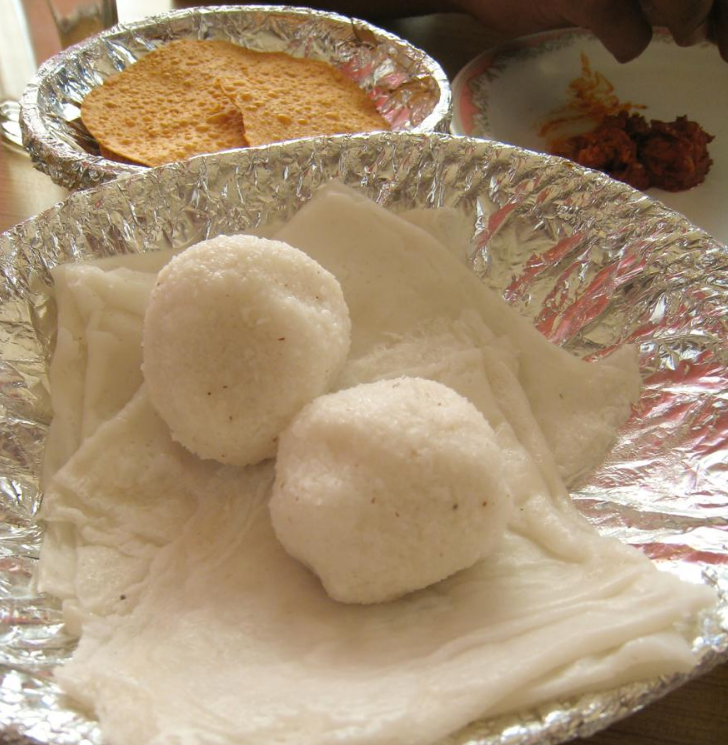
Mangalorean cuisine is largely influenced by South Indian cuisine; several local cuisines are unique to the diverse communities of the region.[273] Coconut, curry leaves, ginger, garlic and chili are common ingredients in Mangalorean curries.[274] Well-known Mangalorean dishes include kori rotti, neer dosa, pundi (rice ball), patrode, golibaje and Mangalore buns.[275] Mangalorean cuisine is also known for fish and chicken dishes like bangude pulimunchi (spicy sour silver-grey mackerels), boothai gasi (sardine semi-gravy), anjal fry, Mangalorean Chicken Sukka and Chicken Ghee Roast.[276][277] Since Mangalore is a coastal city, fish forms the staple diet of most people.[278] The Konkani Hindu community's specialties include daali thoy (lentil curry), bibbe-upkari (tender cashew-nut curry), val val (coconut-milk-based curry), ambat (vegetable-based coconut curry),[279] avnas ambe sasam (pineapple-mango fruit salad), kadgi chakko (raw jackfruit-coconut curry), paagila podi (spine gourd fries) and chane gashi (chickpea curry).[280][281] Mangalorean Catholics' dish sanna-dukra maas (sanna—idli fluffed with toddy or yeast; dukra maas—pork), pork bafat, sorpotel[282] and mutton biryani of the Beary Muslims are well-known dishes.[283] Pickles such as happala, sandige and puli munchi are unique to Mangalore.[284][285] Shendi (toddy), a country liquor prepared from coconut flower sap, is popular.[255] Vegetarian cuisine, also known as Udupi cuisine, is known throughout the state and region.[286]
10. Media
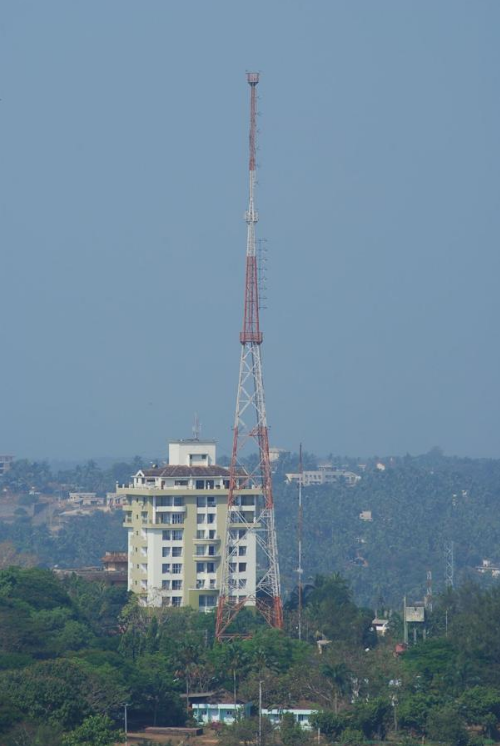
Mangaluru Samachara, the first ever newspaper in Kannada, was published in 1843 by Hermann Mögling of the Basel Mission.[287][288] The first Kannada-to-English dictionary was published in Mangalore by Ferdinand Kittel in 1894.[289] Major national English-language newspapers such as Times of India, The Hindu, The New Indian Express, Deccan Herald and Daijiworld[290][291] publish localised Mangalore editions.[292][293] Madipu (Esteem), Mogaveera, Samparka (Contact) and Saphala (Success) are the well-known Tulu periodicals in Mangalore.[294]
Popular Konkani language periodicals published in the city are Raknno (Guardian), Konknni Dirvem (Konkani Treasure) and Kannik (Offering).[292] Beary periodicals published in Mangalore include Jyothi (Light) and Swatantra Bharata (Independent India).[292] Kannada-language newspapers are Udayavani (Morning Voice) by Manipal Press Ltd, Vijaya Karnataka (Victory of Karnataka) and Vijayavani (Voice of Victory)[295] by VRL Group, Prajavani (Voice of the People), Kannada Prabha (Kannada Radiance), Varthabharathi (Indian News), Samyukta Karnataka (United Karnataka) and Hosa Digantha (New Horizon).[292][296] The city's evening newspapers include Karavali Ale (Waves from the Coast), Mangaluru Mitra (Friend of Mangalore), Sanjevani (Evening Voice) and Jayakirana (Rays of Victory) are also published in the city.[297] The Konkani-language newspaper Kodial Khabar (Mangalore News) is published fortnightly.[292] Malayalam newspapers such as Malayala Manorama (Malayalam Entertainer) and Madhyamam (Medium) publish localised Mangalore editions.[298]
The state-run, nationally broadcast television channel Doordarshan provides national and local television coverage.[299] Cable television also provides channels from independently owned private networks.[300] Canara TV and V4 Digital infotech network, local Multi System Operators, transmits daily video news channels, live events and cultural programmes to the city through local channels.[301] Multiple local television channels broadcast programmes and news in Tulu, Konkani, Beary and Kannada;[302] these include Namma TV, V4 News and Spandana.[303] Tulu channels are Namma Kudla[304] and Posa Kural.[305] All India Radio (AIR) has a studio at Kadri and broadcasts to Mangalore on 100.3 MHz.[306] Mangalore's private FM stations include Radio Mirchi 98.3 FM, Big 92.7 FM[307] and Red 93.5 FM.[308] Radio SARANG 107.8 is a community radio station that is run by St. Aloysius College.[309]
Mangalore is home to the Tulu film industry, which releases one film per month on average.[310] Popular Tulu films include Kadala Mage (Son of the Sea) and Suddha (The Cleansing Rites).[311] Tulu dramas, which are mostly played in the Town Hall at Hampankatta, are very popular.[211] Mangalore hosted the Tulu film festivals in 2006 and 2015.[312][313]
11. Sports and Pastimes
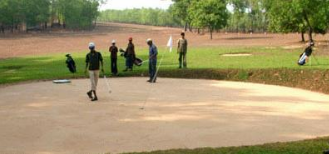
Cricket is popular in Mangalore.[314] Local cricket stadia include Mangala Stadium and B.R. Ambedkar Cricket Stadium (near NMPT).[315][316] The Sports Authority of India (SAI) has a sports training centre at Mangala Stadium.[317] Mangalore United is a Karnataka Premier League (KPL) franchise owned by Fiza Developers.[318] Mangalore Premier League (MPL) is a cricket tournament organised by Karnataka Regional Cricket Academy.[319] Nehru Maidan is an important local venue that hosts domestic, inter-school and intercollegiate tournaments.[320] Mangalore Sports Club (MSC) has been elected as the institutional member for the Mangalore Zone of the Karnataka State Cricket Association (KSCA).[321][322] Lokesh Rahul, commonly known as KL Rahul and Budhi Kunderan, a former Indian wicket-keeper are from Mangalore.[323] Ravi Shastri, who represented India for several years in international cricket as an all-rounder and captained the team, is of Mangalorean descent.[324]
Football is popular in the city and is usually played in the maidans (grounds); the Nehru Maidan is the most popular venue for domestic tournaments.[325] Dakshina Kannada District Football Association (DKDFA) annually organises the Independence Day Cup, which is played on Independence Day at district football grounds adjacent to Nehru Maidan.[326] Schools and colleges from across Dakshina Kannada, Udupi and Kodagu districts participate and the matches are conducted under seven categories for children and young adults in education.[327] Chess is a popular indoor pastime in the city.[328] Mangalore is the headquarters of South Kanara District Chess Association (SKDCA), which has hosted two All India Open Chess tournaments.[329][330][331] Other sports such as tennis, squash, billiards, badminton, table tennis and golf are played in clubs and gymkhanas in Mangalore.[332] Pilikula Nisargadhama, an integrated theme park, has an 18-hole golf course[333] at Vamanjoor.[334] U S Mallya Indoor Stadium offers sporting facilities for badminton and basketball players.[335]
12. Tourism
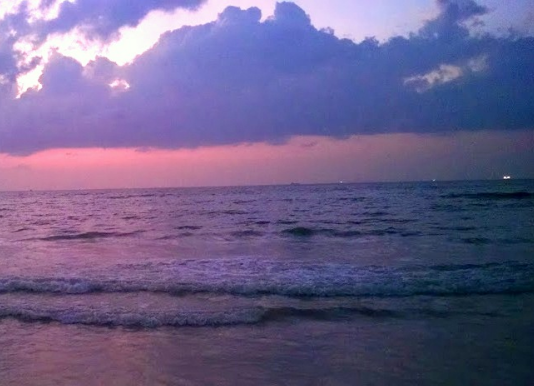
Mangalore lies between the Arabian Sea and the Western Ghats.[336] The city's temples and buildings include the Mangaladevi Temple, Kadri Manjunath Temple, St Aloysius Chapel, the Rosario Cathedral, Milagres Church, Dargah of Hazrat Shareef ul Madni at Ullal and the Zeenath Baksh Jumma Masjid in Bunder.[337][338]
The city is known for beaches such as Panambur, Tannirbhavi, NITK beach, Sasihithlu beach, Someshwara beach, Ullal beach, Kotekar beach and Batapady beach.[336][339][340][341] Panambur and Thannirbhavi beaches attract tourists from across the country.[342] Panambur beach has facilities including food stalls, jet ski rides, boating and dolphin viewing,[343] and trained beach lifeguards and patrol vehicles ensure the safety of visitors.[344][345][346]
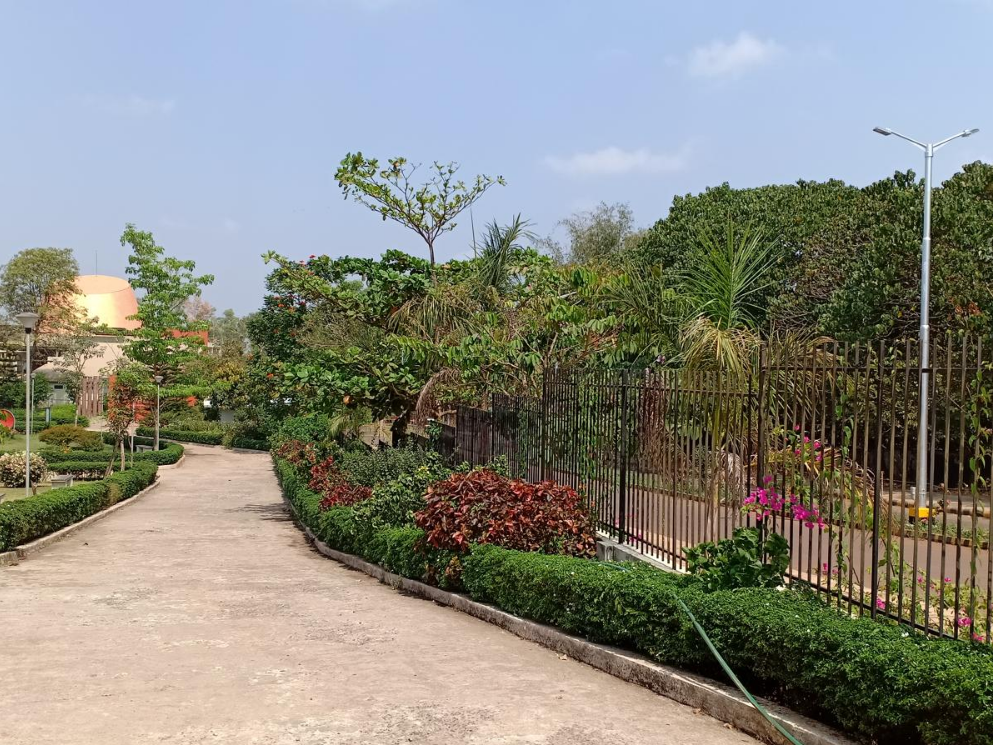
Saavira Kambada Basadi is situated in Moodabidri, 34 km (21 mi) north-east of Mangalore.[348] The Sultan Battery watch tower built by Tipu Sultan is situated in Boloor on the banks of Gurupura River;[349] visitors can take the ferry across the river to Tannirbhavi Beach.[350] Adyar waterfalls is on the city's outskirts about 12 km (7.5 mi) from Mangalore city centre.[351] The city has developed and maintains public parks such as Pilikula Nisargadhama,[352] Kadri Park, Tagore Park[353] at Light House Hill, Mahatma Gandhi Park[354] at Gandhinagar in Mannagudda,[355] Tannirbavi Tree Park,[356] Arise Awake Park at Karangalpady[357] and Corporation Bank Park at Nehru Maidan. Pilikula, which occupies 370 acres (150 ha),[334][358] has a zoo, botanical garden, lake, water park (manasa),[359] Swami Vivekananda Planetarium,[360] science centre[361] and a 50-acre (20 ha) 18-hole golf course.[333][362][363][364][365] Swami Vivekananda Planetarium is the first 3D planetarium in India with an 8K resolution display.[360]
Mangalore Dasara, a ten-day festival held at Sri Gokarnatheswara temple attracts devotees from across India.[366] Mangaladevi Temple attracts devotees from all over the country during Navaratri.[367]
13. Sister Cities
Mangalore is twinned with two Canadian cities:
References
- Kameshwar, G. (2004). Tulu tales: a soota chronicle. Rupa & Co.. p. 8. ISBN 978-81-291-0427-4.
- Sadasivan, S.N. (2000). A social history of India. APH Pub. Corp.. pp. 207–208. ISBN 81-7648-170-X.
- Atmashraddhananda, Swami (2013). A Pilgrimage To Western Ghats Temples in Karnataka. Sri Ramakrishna Math, Chennai. ISBN 978-8178836157.
- "New names invoke a hoary past". The Times of India. 19 October 2014. http://timesofindia.indiatimes.com/city/bengaluru/New-names-invoke-a-hoary-past/articleshow/44873377.cms.
- Census of India, 1971. Part 6, Issue 1. Office of the Registrar General (Government of India). 1973. pp. 268.
- Kudva, Venkataraya Narayan (1972). History of the Dakshinatya Saraswats. Samyukta Gowda Saraswata Sabha. p. 260.
- "A travel guide to coastal Karnataka". Deccan Herald. 20 October 2018. https://www.deccanherald.com/sunday-herald/silence-shores-698661.html.
- Raghuram, M. (18 July 2007). "Mangaluru: it has come a long way". The Hindu. http://www.hindu.com/2007/07/18/stories/2007071855190700.htm.
- S. Muhammad Hussain Nainar (1942). Tuhfat-al-Mujahidin: An Historical Work in The Arabic Language. University of Madras. https://archive.org/details/Tuhfat-al-MujahidinAnHistoricalWorkInTheArabicLanguage.
- Farias, Kranti K. (1999). The Christian Impact on South Kanara. Church History Association of India. ISBN 8175251255. https://books.google.com/books?id=qNHYAAAAMAAJ.
- "1652 Sanson Map of India". Geographicus. http://www.geographicus.com/P/AntiqueMap/India-sanson-1652.
- Sheth, Anisha (6 November 2014). "This city has six names in six languages". The News Minute. http://www.thenewsminute.com/karnatakas/326.
- "ALL IN A NAME". The Times of India. 19 October 2014. https://timesofindia.indiatimes.com/city/bengaluru/ALL-IN-A-NAME/articleshow/44871514.cms.
- "Filled with lore". The Hindu. 9 June 2008. http://www.thehindu.com/todays-paper/tp-features/tp-metroplus/filled-with-lore/article1418239.ece.
- Variyar, Mugdha (18 October 2014). "Bangalore, Mysore, Other Karnataka Cities to be Renamed on 1 November". International Business Times. http://www.ibtimes.co.in/bangalore-mysore-other-karnataka-cities-be-renamed-1-november-611683.
- "Unearthing a rich past". Deccan Herald. 11 July 2011. https://www.deccanherald.com/content/175417/unearthing-rich-past.html.
- Bostock, John (1855). "26 (Voyages to India)". Pliny the Elder, The Natural History. Taylor and Francis. ISBN 1173878041. https://www.perseus.tufts.edu/hopper/text?doc=Perseus%3Atext%3A1999.02.0137%3Abook%3D6%3Achapter%3D26#note-link33.
- Prasad, Om P. (1989). Decay and Revival of Urban Centres in Medieval South India: (c. A.D. 600–1200). 4. Commonwealth Publishers. 163. ISBN 9788171690060.
- Indicopleustes, Cosmas (1897). Christian Topography. 11. The Tertullian Project. pp. 358–373. ISBN 1108012957. https://web.archive.org/web/20040104185449/http://www.tertullian.org/fathers/cosmas_11_book11.htm
- Das, Santosh Kumar (2006). The Economic History of Ancient India. Genesis Publishing Pvt Ltd. pp. 301. ISBN 9788130704234.
- "Zeenath Baksh Masjid | Zeenath Baksh Masjid Mangalore | Zeenath Baksh Masjid History" (in en-US). Karnataka.com. 2017-12-02. https://www.karnataka.com/mangalore/zeenath-baksh-masjid/.
- Jonathan Goldstein (1999). The Jews of China. M. E. Sharpe. p. 123. ISBN 9780765601049. https://books.google.com/books?id=8Z6DlzyT2vwC.
- Edward Simpson; Kai Kresse (2008). Struggling with History: Islam and Cosmopolitanism in the Western Indian Ocean. Columbia University Press. pp. 333. ISBN 978-0-231-70024-5. https://books.google.com/books?id=w0qHKA7zEaEC&pg=PA333. Retrieved 24 July 2012.
- Uri M. Kupferschmidt (1987). The Supreme Muslim Council: Islam Under the British Mandate for Palestine. Brill. pp. 458–459. ISBN 978-90-04-07929-8. https://books.google.com/books?id=ChEVAAAAIAAJ&pg=PA458. Retrieved 25 July 2012.
- Husain Raṇṭattāṇi (2007). Mappila Muslims: A Study on Society and Anti Colonial Struggles. Other Books. pp. 179–. ISBN 978-81-903887-8-8. https://books.google.com/books?id=xlb5BrabQd8C&pg=PA179. Retrieved 25 July 2012.
- Prange, Sebastian R. Monsoon Islam: Trade and Faith on the Medieval Malabar Coast. Cambridge University Press, 2018. 98.
- Pg 58, Cultural heritage of Kerala: an introduction, A. Sreedhara Menon, East-West Publications, 1978
- Shatkin, Gavin (14 August 2013). "Chapter 10 : Planning Mangalore: Garbage Collection in a Small Indian City". Contesting the Indian City: Global Visions and the Politics of the Local. John Wiley & Sons. ISBN 978-1-118-29584-7.
- Puttaswamaiah, K. (1980). Economic Development of Karnataka: A Treatise in Continuity and Change. Oxford & IBH. p. 33. https://books.google.com/books?id=tEAeAAAAIAAJ&q=puttaswamaiah+economic+development.
- Bhat, N. Shyam (1998). South Kanara, 1799–1860: a study in colonial administration and regional response. Mittal Publications. ISBN 978-81-7099-586-9.
- "Tulu stone inscription in Veeranarayana temple belongs to 1159 A.D.: Historian". The Hindu. 22 February 2019. https://www.thehindu.com/news/cities/Mangalore/tulu-stone-inscription-in-veeranarayana-temple-belongs-to-1159-ad-historian/article26344575.ece.
- "Tulu academy to publish book on history of Barakuru". The Hindu. 24 March 2016. https://www.thehindu.com/news/cities/Mangalore/tulu-academy-to-publish-book-on-history-of-barakuru/article8039303.ece.
- Narayanan, M. G. S. Perumāḷs of Kerala. Thrissur (Kerala): CosmoBooks, 2013. 483.
- Ghosh 2002, p. 189 https://books.google.com/books?id=QQHp9wsWaZcC&pg=PA189&dq=&sig=ACfU3U1d2AKJLTdQT1Hs-VurHOe06DStCg#PPA189,M1
- Lee 1829, Perils and detours in Malabar https://web.archive.org/web/20081007092612/http://www.columbia.edu/itc/mealac/pritchett/00generallinks/ibnbatuta/07china2.html#malabar
- Doddamane, A. Wahab (1993). Muslims in Dakshina Kannada: A Historical Study up to 1947 and Survey of Recent Developments. Green Words Publication.
- Nambiar, K Mohanachandran (27 August 2010). "Rare inscription of Vijayanagar discovered". The Times of India. https://timesofindia.indiatimes.com/city/mangaluru/Rare-inscription-of-Vijayanarar-discovered/articleshow/6447579.cms.
- Sewell, Robert (July 2002). The Project Gutenberg E-text of A Forgotten Empire: Vijayanagar; A Contribution to the History of India. Project Gutenberg. p. 46. https://my.eng.utah.edu/~banerjee/Ebooks/Vijayanagar.pdf. Retrieved 18 July 2019.
- Wenger, Estefania (2017). Tipu Sultan: A Biography. Alpha Editions. ISBN 9789386367440.
- Muthanna, I. M. (1977). Karnataka, History, Administration & Culture. Lotus Printers. p. 235. https://books.google.com/books?id=bFq-bwAACAAJ.
- Raghuram, M. (18 June 2005). "Feeling on top of the world". The Hindu. http://www.hindu.com/mp/2005/06/18/stories/2005061800910200.htm.
- Kamath, J. (16 September 2002). "Where rocks tell a tale". The Hindu Business Line. http://www.thehindubusinessline.in/life/2002/09/16/stories/2002091600170300.htm.
- K T, Vinobha (28 February 2019). "Abbakka Utsav 2019 to be held under supervision of DC". The Times of India. https://timesofindia.indiatimes.com/city/mangaluru/abbakka-utsav-2019-to-be-held-under-supervision-of-dc/articleshow/68203620.cms.
- Jayapalan, N. (2001). History of India From 1206 to 1773. Atlantic Publishers & Distributors. p. 84. ISBN 978-8171569151.
- Shastry, Bhagamandala Seetharama (2000). Goa-Kanara Portuguese relations 1498-1763. Concept Publishing Company. p. 8. ISBN 9788170228486.
- A. Sreedhara Menon. Kerala History and its Makers. D C Books (2011)
- A G Noorani. Islam in Kerala. Books [1]
- Roland E. Miller. Mappila Muslim Culture SUNY Press, 2015
- Achari, Soumya Narayan (3 June 2013). "Remains of another day". Deccan Herald. https://www.deccanherald.com/content/336375/remains-another-day.html.
- Viaggi di Pietro Della Valle il pellegrino, Parte terza, by Pietro Della Valle and Mario Schipano, Rome (1663), pages 222-224. https://books.google.com/books?id=QhLwrzK4Hq8C
- South Kanara District Gazetteer 1973, p. 62
- Thornton 1859, p. 114 https://archive.org/details/historybritishe04thorgoog
- Thornton 1859, p. 170 https://archive.org/details/historybritishe04thorgoog
- Lal 2002, p. 22
- Forrest 1887, pp. 314–316
- Townsend 1867, p. 628 https://archive.org/details/manualofdatesdic00townrich/page/628
- Riddick 2006, p. 28 https://books.google.com/books?id=V2nGnWXV7coC&pg=PA28&dq=&sig=ACfU3U1AqhfzPUctT1n1lmbLKqrtzEu7qw#PPA28,M1
- Prabhu 1999, p. 152
- "Dakshina Kannada to lose banking jewel". The Hindu. 31 March 2019. https://www.thehindu.com/news/cities/Mangalore/dakshina-kannada-to-lose-banking-jewel/article26690322.ece.
- "175 glorious years for Basel Mission Press". The Hindu. 5 December 2016. http://www.thehindu.com/news/cities/Mangalore/175-glorious-years-for-Basel-Mission-Press/article16762961.ece.
- "175th anniversary of Basel Mission in Mangalore, Udupi". Deccan Herald. 28 October 2009. http://www.deccanherald.com/content/32972/175th-anniversary-basel-mission-mangalore.html.
- Bhat, N. Shyam (2001). Judiciary and Police in Early Colonial South Kanara, 1799–1862. Mittal Publications. ISBN 978-81-7099-820-4.
- Monteiro, John B (8 January 2014). "Last of Italian Jesuits in Mangalore dies in his homeland". Daijiworld. http://www.daijiworld.com/news/news_disp.asp?n_id=211432.
- Mondal, Sudipto (29 October 2007). "Mangalore was once the starting point of India's longest rail route". The Hindu. http://www.hindu.com/2007/10/29/stories/2007102958510300.htm.
- "States Reorganisation Act 1956". Commonwealth Legal Information Institute. http://www.commonlii.org/in/legis/num_act/sra1956250/.
- South Kanara District Gazetteer. Karnataka State Gazetteer. 12. Gazetteer Department (Government of Karnataka). 1973. https://books.google.com/books?id=-6j8tgAACAAJ.
- "Container tracking operations launched at New Mangalore Port". Daijiworld. 22 November 2018. https://www.daijiworld.com/news/newsDisplay.aspx?newsID=539779.
- Panda, Damodar (1991). Cargo Handling in the Major Ports of India. Minerva Associates (Publications). p. 30. ISBN 978-81-85195-33-9.
- Sharma, Ravi. "Industrial leap". Frontline (The Hindu) 24 (19 ( 22 Sep. – 5 October 2007)). http://www.frontline.in/static/html/fl2419/stories/20071005507310600.htm. Retrieved 1 March 2015.
- Bhat, Ambarish (18 January 2019). "CBI books MRPL engineer". Deccan Herald. https://www.deccanherald.com/state/cbi-books-mrpl-engineer-713765.html.
- Mishra, Richa (2 April 2006). "Strategic oil reserves to come directly under Govt". The Hindu Business Line. https://www.thehindubusinessline.com/todays-paper/tp-others/tp-states/Strategic-oil-reserves-to-come-directly-under-Govt/article20203878.ece.
- "Mangalore, India Page". Falling Rain Genomics, Inc. http://www.fallingrain.com/world/IN/19/Mangalore.html.
- "Rainfall Stations in India". Indian Institute of Tropical Meteorology (Pune). http://envis.tropmet.res.in/rainfall_stations.htm.
- Rao, P. S. N. (January 2006). Urban governance and management: Indian initiatives. Indian Institute of Public Administration in association with Kanishka Publishers, Distributors. p. 402. ISBN 978-81-7391-801-8.
- "Mangaluru City Corporation". Mangaluru Smart City. https://www.mangalurusmartcity.net/mangaluru-city-corporation.
- "Ground water information booklet – Dakshina Kannada district, Karnataka". http://cgwb.gov.in/District_Profile/karnataka/DAKSHINA_KANNADA.pdf.
- Mangalore City Corporation, p. 38
- Mausam: quarterly journal of meteorology, hydrology & geophysics, Volume 56, Issue 1. India Meteorological Department. 2005. p. 76.
- Seismic zoning map of India (Map). Geological Survey of India. Archived from the original on 4 September 2004. Retrieved 20 July 2008. https://web.archive.org/web/20040904091404/http://gcmd.nasa.gov/records/GCMD_GSI_BHUJ_SEISMIC_ZONES_MAP.html
- Subrahmanyam, V. P.. "Some aspects of water balance in the tropical monsoon climates of India". Hydrology of Humid Tropical Regions with Particular Reference to the Hydrological Effects of Agriculture and Forestry Practice (Proceedings of the Hamburg Symposium, August 1983) (International Association of Hydrological Sciences (IAHS)) 140: 327–328. http://www.cig.ensmp.fr/~iahs/redbooks/a140/iahs_140_0325.pdf. Retrieved 8 July 2008.
- Shrihari 2007, pp. 5–6
- Balakrishna, K. M.; Narayana, Y; Kumari, Anitha. Meteorological Measurements of Mangalore Region for ARMEX Programme (Observations and Data Analysis). Department of Physics (Mangalore University). p. 26. http://www.nio.org/past_events/ARMEX/presentations/P2.pdf. Retrieved 25 March 2008.
- "Mangalore, India". Weatherbase. http://www.weatherbase.com/weather/weather.php3?s=48234&refer=&units=metric.
- "Average minimum and maximum temperature over the year for Mangalore, India". Weather and Climate. https://weather-and-climate.com/average-monthly-Rainfall-Temperature-Sunshine,Mangalore,India.
- "Weather services to Karnataka state delivered by IMD". IMD, Inc. http://www.imdbangalore.gov.in/mchistory.pdf#15.
- Shreyas, H S (20 March 2014). "Mangalore: Temperature in coast never touched 40° C – IMD". Daijiworld. http://www.daijiworld.com/news/news_disp.asp?n_id=224013.
- "Western Ghats (sub cluster nomination)". UNESCO World Heritage Centre. https://whc.unesco.org/en/tentativelists/2103/.
- Mishra, A. K.; Gnanaseelan, C.; Seetaramayya, P. (25 August 2004). "A study of rainfall along the west coast of India in relation to low level jet and air–sea interactions over the Arabian Sea". Current Science (Current Science Association) 87 (4): 483. http://www.iisc.ernet.in/currsci/aug252004/475.pdf. Retrieved 21 March 2008.
- "TuTiempo – Mangalore climate from 1973 to 2014". Tutiempo. http://www.tutiempo.net/en/Climate/Mangalore_Bajpe/432840.htm.
- "South Scan (Mangalore, Karnataka)". CMP Media LLC. http://www.crn.in/SouthScanNov152007.aspx.
- Rochan, M (17 February 2008). "Mangalore takes over as the new SEZ destination". The Economic Times. http://economictimes.indiatimes.com/Features/The_Sunday_ET/Property/Mangalore_takes_over_as_the_new_SEZ_destination/articleshow/2788712.cms.
- "Mangalore Customs collects Rs 447 cr revenue". The Hindu Business Line. 4 February 2013. https://www.thehindubusinessline.com/news/education/mangalore-customs-collects-rs-447-cr-revenue/article23093776.ece.
- "Mangaluru Customs Commissionerate surpasses revenue target". The Hindu. 28 January 2019. https://www.thehindu.com/news/cities/Mangalore/mangaluru-customs-commissionerate-surpasses-revenue-target/article26107046.ece.
- Jha, Ajit Kumar (9 October 2017). "Karnataka calling: IT done, the state should now transform its agriculture". India Today. https://www.indiatoday.in/magazine/from-india-today-magazine/story/20171009-karnataka-bengaluru-it-start-ups-agriculture-growth-engine-1053993-2017-10-05.
- "Commissionerate of Customs – Mangaluru". Mangalore Customs. http://customsmangalore.gov.in/organization/about-us.htm.
- "Cognizant opens new facility in Mangaluru". The Hindu Business Line. 7 February 2020. https://www.thehindubusinessline.com/info-tech/cognizant-opens-new-facility-in-mangaluru/article30759590.ece.
- "BASF India inaugurates new innovation campus in Navi Mumbai". Outlook India. 3 March 2017. https://www.outlookindia.com/newsscroll/basf-india-inaugurates-new-innovation-campus-in-navi-mumbai/1000102.
- Kulkarni, Mahesh (1 April 2019). "KIOCL to modernise pellet plant in Mangaluru". Deccan Herald. https://www.deccanherald.com/business/kiocl-to-modernise-pellet-plant-in-mangaluru-726412.html.
- "IOCL to commission two import facilities next year". The Hindu. 4 July 2017. https://www.thehindu.com/news/national/tamil-nadu/iocl-to-commission-two-import-facilities-next-year/article19208498.ece.
- "Mock drill at BPCL LPG bottling plant marks chemical disaster prevention day". Deccan Herald. 5 December 2014. https://www.deccanherald.com/content/445682/mock-drill-bpcl-lpg-bottling.html.
- "Indian Oil Corporation Limited, distributes wheeler dustbins to Mangaluru schools". The Hindu. 30 August 2019. https://www.thehindu.com/news/cities/Mangalore/iocl-distributes-wheeler-dustbins-to-schools/article29297099.ece.
- "Total Oil opens second LPG facility at New Mangalore". The Hindu Business Line. http://www.thehindubusinessline.com/todays-paper/tp-logistics/total-oil-opens-second-lpg-facility-at-new-mangalore/article976459.ece.
- "Hindustan Unilever Locations". Business Standard. https://www.business-standard.com/company/hind-unilever-255/information/company-location.
- "India receives 1st parcel of Iranian oil for strategic storage". The Economic Times. 12 October 201. http://economictimes.indiatimes.com/industry/energy/oil-gas/india-receives-1st-parcel-of-iranian-oil-for-strategic-storage/articleshow/54816784.cms.
- "Strategic storage of crude begins at Mangaluru cavern". Business Standard. 12 October 2016. http://www.business-standard.com/article/news-ians/strategic-storage-of-crude-begins-at-mangaluru-cavern-116101200895_1.html.
- "City gets 1.5 MMT crude oil storage facility". The Times of India. 27 May 2009. https://timesofindia.indiatimes.com/city/mangaluru/City-gets-1-5-MMT-crude-oil-storage-facility/articleshow/4585860.cms.
- "Bharati Defence & Infrastructure Ltd. – Reports". NDTV Profit. http://profit.ndtv.com/stock/bharati-defence-&-infrastructure-ltd_bhartiship/reports.
- "Bharti Defence delivers C-162 to Coast Guard". The Hindu. 2 March 2018. https://www.thehindu.com/news/cities/Mangalore/bharti-defence-delivers-c-162-to-coast-guard/article22899290.ece.
- Pinto, Stanley (9 September 2015). "Infosys Mangaluru celebrates 20th anniversary". The Times of India. https://timesofindia.indiatimes.com/city/mangaluru/Infosys-Mangaluru-celebrates-20th-anniversary/articleshow/48888682.cms.
- "Cognizant opens new 100,000 sq-ft facility for 1,100 employees in Mangaluru". Business Standard. Press Trust of India. 7 February 2020. https://www.business-standard.com/article/pti-stories/cognizant-opens-new-facility-in-mangaluru-120020700941_1.html.
- "Thomson Reuters Financial and Risk Business becomes Refinitiv in India". Business Standard. 7 June 2019. https://www.business-standard.com/article/news-ani/thomson-reuters-financial-and-risk-business-becomes-refinitiv-in-india-119060700446_1.html.
- "Hinduja Global to acquire stake in Mphasis' BPO business for Rs 17 crore". The Economic Times. 2 July 2015. http://economictimes.indiatimes.com/tech/ites/hinduja-global-to-acquire-stake-in-mphasis-bpo-business-for-rs-17-crore/articleshow/47884907.cms.
- J A, Naina (3 May 2019). "Improve connectivity to New M'lore port: Exporters". Deccan Herald. https://www.deccanherald.com/state/mangaluru/improve-connectivity-to-new-m-lore-port-exporters-732054.html.
- "Study Area around SEZ, Mangalore" (DOC). Mangalore City Corporation. http://www.mangalorecity.gov.in/forms/sez/MSEZ%20Draft%20EIA/Mangalore%20SEZ,%20Oct.%202007/Chapter%203/Fig.%203.5.1.doc.
- "Perform Group | Mangalore Visit". http://www.mangalorevisit.in/companies/perform-group/.
- "Mangaluru: TCS to invest Rs 500 crores in Dakshina Kannada, create 4,000 jobs". Daijiworld. 6 August 2020. https://www.daijiworld.com/news/newsDisplay.aspx?newsID=738302.
- Pinto, Stanley (7 August 2020). "Karnataka: TCS gets nod to set up ITeS in Dakshina Kannada". The Times of India. https://timesofindia.com/city/mangaluru/tcs-gets-nod-to-set-up-ites-in-dakshina-kannada/articleshow/77400970.cms.
- "KEONICS proposes setting up electronics city in Mangaluru". The Hindu. 29 December 2020. https://www.thehindu.com/news/cities/Mangalore/keonics-proposes-setting-up-electronics-city-in-mangaluru/article33440648.ece.
- K T, Vinobha (28 December 2020). "Karnataka State Electronics Development Corporation Limited moots RK Baliga Electronics City in Mangaluru". The Times of India. https://timesofindia.indiatimes.com/city/mangaluru/karnataka-state-electronics-development-corporation-limited-moots-rk-baliga-electronics-city-in-mangaluru/articleshow/79992131.cms.
- J A, Naina (29 December 2020). "Keonics to urge CM to set up Baliga Hi-Tech City in Mangaluru". Deccan Herald. https://www.deccanherald.com/state/mangaluru/keonics-to-urge-cm-to-set-up-baliga-hi-tech-city-in-mangaluru-932675.html.
- "CEOL will lead to creation of Silicon Valley in west coast". The Hindu. 30 December 2017. https://www.thehindu.com/news/cities/Mangalore/ceol-will-lead-to-creation-of-silicon-valley-in-west-coast/article22328879.ece.
- "History". Corporation Bank. http://www.corpbank.com/asp/0100text.asp?presentID=84&headID=84.
- "Cheque truncation process from April, says Leeladhar". The Hindu. 20 November 2005. http://www.hindu.com/2005/11/20/stories/2005112015560300.htm.
- "Inception". Vijaya Bank. http://vijayabank.com/vijaya/vijaya/internet-en/menus/we-at-vijaya-bank/inception.html.
- "History of Karnataka Bank". Karnataka Bank. http://www.karnatakabank.com/ktk/History.jsp.
- Miyar, Melka (15 March 2008). "Mangalore: Countdown for MCC Bank Election Begins Amid Blame Games". Daijiworld. http://www.daijiworld.com/news/news_disp.asp?n_id=44631&n_tit=Mangalore:.
- "Mangalore Co-op Bank installs rooftop solar plant". The Hindu Business Line. 17 August 2017. http://www.thehindubusinessline.com/money-and-banking/mangalore-coop-bank-installs-rooftop-solar-plant/article9821798.ece.
- "History of SCDCC Bank". SCDCC Bank. http://www.scdccbank.com/history.html.
- "Syngene International gains after Mangalore facility starts operations". Business Standard. 20 March 2020. https://www.business-standard.com/article/news-cm/syngene-international-gains-after-mangalore-facility-starts-operations-120032000431_1.html.
- "Syngene plans $100 mn manufacturing facility in Mangalore". Business Standard. 1 September 2015. http://www.business-standard.com/article/b2b-connect/syngene-plans-100-mn-manufacturing-facility-in-mangalore-115090100290_1.html.
- "Work on Kulai fishing harbour expected to commence soon". The Times of India. 13 February 2019. https://timesofindia.com/city/mangaluru/work-on-kulai-fishing-habour-expected-to-comence-soon/articleshow/67965978.cms.
- Directorate of Economics and Statistics (Government of Karnataka) 2004, p. 233
- "New Mangalore Port records handling of 1 lakh TEU of container traffic". The Hindu. 2 March 2018. https://www.thehindu.com/news/cities/Mangalore/new-mangalore-port-records-handling-of-1-lakh-teu-of-container-traffic/article22899068.ece.
- Vinayak, A J (7 June 2013). "8% rise in fish catch in Udupi, Dakshina Kannada". The Hindu Business Line. http://www.thehindubusinessline.com/news/states/8-rise-in-fish-catch-in-udupi-dakshina-kannada/article4791726.ece.
- Somerset, Bond & Wright, p. 510 https://books.google.com/books?id=8WNEcgMr11kC&pg=PA509&lpg=RA1-PA516&vq=&dq=&sig=ACfU3U1Shfg7Vate1ZGHKqcD_GgO1ZsEnA#PPA516,M1
- Somerset, Bond & Wright, p. 511 https://books.google.com/books?id=8WNEcgMr11kC&printsec=frontcover#PPA517,M1
- "C-16 Population By Mother Tongue". https://www.censusindia.gov.in/2011census/C-16.html.
- "Cities having population 1 lakh and above". Census of india. http://www.censusindia.gov.in/2011-prov-results/paper2/data_files/India2/Table_2_PR_Cities_1Lakh_and_Above.pdf.
- "Urban Agglomerations/Cities having population 1 lakh and above". Census of India. http://www.censusindia.gov.in/2011-prov-results/paper2/data_files/India2/Table_3_PR_UA_Citiees_1Lakh_and_Above.pdf.
- Mangalore City Corporation, p. 131
- "Mangalore City Census 2011 data – Mangalore Slums 2011". Census 2011. http://www.census2011.co.in/census/city/451-mangalore.html#slums.
- Kumar, ND Shiva (21 August 2013). "Slums increasing in Bangalore". The Times of India. http://timesofindia.indiatimes.com/city/bengaluru/Slums-increasing-in-Bangalore/articleshow/21962048.cms.
- Sastry, Anil Kumar (2 January 2016). "Human Development Index: DC exhorts officials to aim high". The Hindu. http://www.thehindu.com/news/cities/Mangalore/human-development-index-dc-exhorts-officials-to-aim-high/article8056883.ece.
- Kumaran, Tamarapu Sampath. "Pilgrimage to temples in Dakshina Kannada". http://cincinnatitemple.com/articles/Dakshina-Kannada-Pilgrimage.pdf.
- "Name us Shettigar, say Padmashalis". Deccan Herald. 6 April 2015. https://www.deccanherald.com/content/470121/name-us-shettigar-say-padmashalis.html.
- "Mangalore hosts tenth national meeting of young Catholics". The Herald (Malaysian Catholic Weekly). 17 January 2017. http://www.heraldmalaysia.com/news/mangalore-hosts-tenth-national-meeting-of-young-catholics/34287/2.
- South Kanara District Gazetteer 1973, p. 93
- Patrao, Michael (4 May 2012). "An Anglo-Indian with Mangalorean links". Deccan Herald. http://www.deccanherald.com/content/246986/an-anglo-indian-mangalorean-links.html.
- "World Beary Convention in Dubai on April 1, 2". Daijiworld. 17 February 2010. http://www.daijiworld.com/news/newsDisplay.aspx?newsID=72458.
- J A, Naina (18 December 2016). "First Beary-Kannada-English dictionary to be released soon". Deccan Herald. http://www.deccanherald.com/content/587198/first-beary-kannada-english-dictionary.html.
- Shenoy, Jaideep (31 July 2016). "Mangaluru city police undertakes Beary local language learning skills". The Times of India. http://timesofindia.indiatimes.com/city/mangaluru/Mangaluru-city-police-undertakes-Beary-local-language-learning-skills/articleshow/53475696.cms.
- Patil, Shankaragouda (2002). Community Dominance and Political Modernisation: The Lingayats. Mittal Publications. pp. 2.
- Pinto, Stanley (19 January 2015). "Land reforms moved Jains away comfort zone". The Times of India. https://timesofindia.indiatimes.com/city/mangaluru/Land-reforms-moved-Jains-away-comfort-zone-/articleshow/45943527.cms.
- Malli, Karthik (27 February 2020). "Many languages, one people: The linguistic diversity of Mangaluru". The News Minute. https://www.thenewsminute.com/article/many-languages-one-people-linguistic-diversity-mangaluru-119054.
- "DK Marathi community meet today". The Times of India. 15 February 2002. https://timesofindia.indiatimes.com/city/bengaluru/DK-Marathi-community-meet-today/articleshow/1097566.cms.
- "Three flyovers in Mangalore will be ready by year-end: Moily". The Hindu. 12 September 2011. http://www.thehindu.com/news/cities/Mangalore/three-flyovers-in-mangalore-will-be-ready-by-yearend-moily/article2447040.ece.
- K T, Vinobha (6 February 2018). "Smart City project to restore Century-old Mangaluru municipality building". The Times of India. https://timesofindia.indiatimes.com/city/mangaluru/smart-city-project-to-restore-century-old-mangaluru-municipality-building/articleshow/62800344.cms.
- "Mangaluru: Candidates for mayoral election – Congress facing problem of plenty". Daijiworld. 18 February 2017. http://www.daijiworld.com/news/newsDisplay.aspx?newsID=438794.
- "Corporation council polls on November 12". The Hindu. 21 October 2019. https://www.thehindu.com/news/cities/Mangalore/corporation-council-polls-on-november-12/article29753748.ece.
- Integrated Solid Waste Management Operation & Maintenance report, p. 7
- "A first, Muda to build apartments on PPP mode". The Times of India. 1 July 2014. https://timesofindia.indiatimes.com/city/mangaluru/A-first-Muda-to-build-apartments-on-PPP-mode/articleshow/37561055.cms.
- "Nine waterbodies in Mangaluru to get facelift". The Hindu. 13 December 2019. https://www.thehindu.com/news/cities/Mangalore/nine-water-bodies-in-mangaluu-to-get-facelift/article30300918.ece.
- "Mangalore Urban Development Authority eyes largest planned layout". The Hindu. 11 March 2014. https://www.thehindu.com/news/cities/Mangalore/mangalore-urban-development-authority-eyes-largest-planned-layout/article5773192.ece.
- "House plan on 'single site' may not need MUDA nod". The Hindu. 13 January 2014. https://www.thehindu.com/news/cities/Mangalore/house-plan-on-single-site-may-not-need-muda-nod/article5572918.ece.
- "Smart City Limited to take up 44 works worth ₹ 958 crore". The Hindu. 26 June 2019. https://www.thehindu.com/news/cities/Mangalore/smart-city-limited-to-take-up-44-works-worth-958-crore/article28139473.ece.
- "Congress bags Mayor's post as BJP goofs up". The Hindu. 8 March 2012. http://www.thehindu.com/news/cities/Mangalore/article2973530.ece.
- "New Assembly constituencies". Daijiworld. 14 July 2007. http://www.daijiworld.com/news/news_disp.asp?n_id=35701&n_tit=M'lore:.
- Ranganna, T S (5 May 2006). "Assembly constituencies proposed by Delimitation Commission". The Hindu. http://www.hindu.com/2006/05/05/stories/2006050522990400.htm.
- Raghuram, M (29 September 2016). "Mangalore to have three Assembly segments". The Hindu. https://www.thehindu.com/todays-paper/tp-national/tp-karnataka/Mangalore-to-have-three-Assembly-segments/article14802322.ece.
- "Every Friday, have phone-in with Police Commissioner". The Hindu. 5 August 2016. http://www.thehindu.com/news/cities/Mangalore/Every-Friday-have-phone-in-with-Police-Commissioner/article14551574.ece.
- "The Indian Police Service (Fixation of Cadre Strength) Regulations, 1955". Ministry of Personnel, Public Grievances and Pensions. http://persmin.nic.in/ais/Ips_fcsreg.htm.
- Pinto, Stanley (23 March 2017). "Mangaluru's KMC Hospital performs first liver transplant". The Times of India. https://timesofindia.indiatimes.com/city/mangaluru/mangalurus-kmc-hospital-performs-first-liver-transplant/articleshow/57796172.cms.
- "Mangaluru: Healing, comfort - Tryst with Father Muller Charitable Institutions". Daijiworld. 12 February 2020. https://www.daijiworld.com/news/newsDisplay.aspx?newsID=673453.
- "Private doctors, hospitals suspend OPD services". The Hindu. 4 November 2017. https://www.thehindu.com/news/cities/Mangalore/private-doctors-hospitals-suspend-opd-services/article19980143.ece.
- Noronha, Sushil (6 September 2019). "Mangaluru: Mother Mary Sodality donates wheelchairs to Wenlock Hospital". Daijiworld. https://www.daijiworld.com/news/newsDisplay.aspx?newsID=621969.
- "Mangaluru opens up to medical tourism". The Times of India. 11 February 2019. https://timesofindia.indiatimes.com/city/mangaluru/city-opens-up-to-medical-tourism/articleshow/67933044.cms.
- "About Us". Karnataka Power Transmission Corporation Limited (KPTCL). http://www.kptcl.com/kptclaboutus.htm.
- "About Us". Mangalore Electricity Supply Company (MESCOM). http://www.mesco.in/aboutus/index.asp.
- Directorate of Economics and Statistics (Government of Karnataka) 2004, p. 227
- "Mangalore Refinery and Petrochemicals Ltd. (A Subsidiary of Oil and Natural gas Corporation Ltd.)" (PDF). Mangalore Refinery and Petrochemicals (MRPL). http://wwpl.co.in/downloads/sep06_06_pmc.pdfw.mr.
- "Infrastructure". Mangalore Chemicals & Fertilizers (MCF). http://www.mangalorechemicals.com/operations_Infrastructure.asp.
- "No funds crunch to tackle water scarcity in Dakshina Kannada". The Hindu Business Line. 21 April 2005. http://www.thehindubusinessline.in/2005/04/21/stories/2005042101271900.htm.
- Budhya, Gururaja. 'Social relevance of decision making' – A case study of water supply and waste water management in Mangalore, Coastal Karnataka, India.. Asian Educational Services. pp. 1–2. http://www.ihdp.uni-bonn.de/ihdw02/summaries/pdf/Guru%20text1.pdf. Retrieved 18 February 2008.
- Karnataka Coastal Project. Duraline Pipes. p. 1. http://www.duraline.in/newsletter/Q4%202004%20Newsletter.pdf. Retrieved 27 July 2008.
- "Karnataka: French firm Suez to rehabilitate Mangaluru's drinking water at Rs 565.79 cr". The Times of India. 11 December 2019. https://timesofindia.indiatimes.com/city/mangaluru/karnataka-french-firm-suez-to-rehabilitate-mangalurus-drinking-water-at-rs-565-79-cr/articleshow/72477853.cms.
- "Nine waterbodies in Mangaluru to get facelift". The Hindu. 13 December 2019. https://www.thehindu.com/news/cities/Mangalore/nine-water-bodies-in-mangaluu-to-get-facelift/article30300918.ece.
- "Vamanjoor dumpyard turns killer". The Times of India. 8 December 2002. http://articles.timesofindia.indiatimes.com/2002-12-08/bangalore/27318143_1_bio-medical-waste-dumpyard-disposal.
- Mangalore City Corporation, p. 10
- "South Kannada Telecom District". Bharat Sanchar Nigam Limited (Karnataka Telecom Circle). http://www.karnataka.bsnl.co.in/mangalore/.
- "Tata Docomo expands 3G network in Karnataka". The Hindu Business Line. 19 June 2014. http://www.thehindubusinessline.com/news/national/tata-docomo-expands-3g-network-in-karnataka/article6130487.ece.
- "BSNL launches broadband service". The Hindu. 17 June 2005. http://hindu.com/2005/06/17/stories/2005061714690300.htm.
- Vinayak, A J (20 December 2019). "Coastal Karnataka emerges a prominent education corridor". The Hindu Business Line. https://www.thehindubusinessline.com/news/national/coastal-karnataka-emerges-a-prominent-education-corridor/article30360453.ece.
- Madhyastha, M N; Rahman, M Abdul; Kaveriappa, K M. "A brief history of scientific technology, research and educational progress of South Kanara". Indian Journal of History of Science. http://www.new1.dli.ernet.in/data1/upload/insa/INSA_1/20005af6_260.pdf.
- "Meritorious students to be felicitated: Khader". The Hindu. 2 June 2019. https://www.thehindu.com/news/cities/Mangalore/meritorious-students-to-be-felicitated-khader/article27402526.ece.
- "13 government schools to get e-smart school units under Smart City". The Times of India. 5 March 2019. https://timesofindia.indiatimes.com/city/mangaluru/13-govt-schools-to-get-e-smart-school-units-under-smart-city/articleshow/68260840.cms.
- M V, Pavan (17 May 2013). "Mangalore-based St Theresa's School has secured cent percent results in class 10 examination of Indian Certificate of Secondary Education (ICSE). The results were announced on Saturday and this is the only ICSE School in Dakshina Kannada district.". The Times of India. http://timesofindia.indiatimes.com/home/Mangalore-based-St-Theresas-School-has-secured-cent-percent-results-in-class-10-examination-of-Indian-Certificate-of-Secondary-Education-ICSE-The-results-were-announced-on-Saturday-and-this-is-the-only-ICSE-School-in-Dakshina-Kannada-district-/articleshow/20106194.cms?.
- "Many CBSE schools record 100 p.c. results". The Hindu. 29 May 2016. http://www.thehindu.com/news/cities/Mangalore/many-cbse-schools-record-100-pc-results/article8662466.ece.
- M, Raghava (13 June 2016). "This rank holder took the open schooling route". The Hindu. https://www.thehindu.com/news/cities/Mangalore/This-rank-holder-took-the-open-schooling-route/article14420274.ece.
- "B.E.M. clocks 175 years". The Hindu. 2 June 2016. https://www.thehindu.com/news/cities/Mangalore/bem-clocks-175-years/article5100364.ece.
- Ullal, Spoorthi (5 December 2015). "Mangaluru: Milagres Avishkar scheduled at Milagres college". Daijiworld. http://www.daijiworld.com/news/newsDisplay.aspx?newsID=371207.
- Saldanha Shet, IJ (29 July 2011). "Mission Education". Mangalore Today. http://www.mangaloretoday.com/opinion/MISSION-EDUCATION.html.
- "Mangaluru college gets heritage tag". Deccan Herald. 6 July 2015. https://www.deccanherald.com/content/487689/mangaluru-college-gets-heritage-tag.html.
- Rao R, Sunitha (4 May 2018). "Carmelites celebrate 150 years of educating girls". The Times of India. https://timesofindia.indiatimes.com/city/bengaluru/carmelites-celebrate-150-years-of-educating-girls/articleshow/64023075.cms.
- "Landslips in Dakshina Kannada". The Hindu. 24 July 2019. https://www.thehindu.com/news/national/karnataka/landslips-in-dakshina-kannada/article28695625.ece.
- Shenoy, Jaideep (3 July 2015). "Aravind Adiga donates Rs 1 cr to alma mater". The Times of India. https://timesofindia.indiatimes.com/city/mangaluru/Aravind-Adiga-donates-Rs-1-cr-to-alma-mater/articleshow/47889025.cms.
- Shenoy, Jaideep (9 January 2018). "St Agnes College to launch centennial year celebrations on January 12". The Times of India. https://timesofindia.indiatimes.com/city/mangaluru/st-agnes-college-to-launch-centennial-year-celebrations-on-january-12/articleshow/62433805.cms.
- Shenoy, Jaideep (30 March 2017). "Mangaluru: St Agnes College gets A+ grade from NAAC in fourth cycle". The Times of India. https://timesofindia.com/city/mangaluru/st-agnes-college-gets-a-grade-from-naac-in-fourth-cycle/articleshow/57915305.cms.
- "Rain makes it more exciting for children". The Hindu. 19 July 2011. https://www.thehindu.com/news/cities/Mangalore/rain-makes-it-more-exciting-for-children/article2251354.ece.
- "1,250 students getting The Hindu school edition". The Hindu. 14 November 2014. https://www.thehindu.com/news/cities/Mangalore/1250-students-getting-the-hindu-school-edition/article6598664.ece.
- "Carmel School Mangaluru shines again". Daijiworld. 7 May 2019. https://www.daijiworld.com/news/newsDisplay.aspx?newsID=585698.
- Fernandes, Ronald Anil; J. A., Naina; Hegde, Bhakti V.; Raveendran, Aabha; Padmanabha K. V., Sibanthi; Mayya, Sushma P. (15 August 2007). "Sixty and still enterprising ...". Deccan Herald. http://archive.deccanherald.com/content/Aug152007/district2007081519172.asp.
- Kamila, Raviprasad (1 April 2006). "It's a treasure of books". The Hindu. http://www.hindu.com/mp/2006/04/01/stories/2006040100730100.htm.
- "Mangalore University all set to celebrate jubilee". The Hindu. 2004-09-08. http://www.thehindu.com/2004/09/08/stories/2004090811840300.htm.
- "Details of Mangalore University". Mangalore University. http://www.mangaloreuniversity.ac.in/.
- "UGC recognised Universities in Karnataka with NAAC accreditation status". Education Observer. http://www.educationobserver.com/resources/universsities/karnataka.htm.
- Mendonsa, Kevin (3 January 2020). "ISRO launches South India's first student-centric RAC-S centre at NITK". The Times of India. https://timesofindia.indiatimes.com/india/isro-launches-south-indias-first-student-centric-rac-s-centre-at-nitk/articleshow/73088609.cms.
- "Advances in Chemical and Material Science". Mangalore University. https://mangaloreuniversity.ac.in/iccm2019/Broucher_ICCM_2019.pdf.
- Shenoy, Jaideep (14 October 2016). "Mangaluru international airport stands third in customer satisfaction survey". The Times of India. http://timesofindia.indiatimes.com/city/mangaluru/Mangaluru-international-airport-stands-third-in-customer-satisfaction-survey/articleshow/54857060.cms.
- Shenoy, Jaideep (24 April 2014). "MIA handles record passengers during 2013–14 at a growth of 21.71%.". The Times of India. http://timesofindia.indiatimes.com/city/mangaluru/MIA-handles-record-passengers-during-2013-14-at-a-growth-of-21-71-/articleshow/34162590.cms?.
- Kamila, Raviprasad (28 October 2014). "Air India reintroduces Mangalore-Kuwait service". The Hindu. http://www.thehindu.com/news/cities/Mangalore/air-india-reintroduces-mangalorekuwait-service/article6540868.ece.
- Kulkarni, Sagar (8 November 2018). "Centre okays leasing out Mangalore airport". Deccan Herald. https://www.deccanherald.com/state/centre-okays-leasing-out-702121.html.
- Vinayak, A J (25 January 2016). "Mangalore Airport records growth in passenger traffic". The Hindu Business Line. http://www.thehindubusinessline.com/economy/logistics/mangalore-airport-handles-1242-lakh-passengers/article8151464.ece.
- "Mangalore airport to start domestic cargo handling from June 26". The Hindu Business Line. 19 June 2015. http://www.thehindubusinessline.com/economy/logistics/mangalore-airport-to-start-domestic-cargo-handling-from-june-26/article7333074.ece.
- "Adani airports in Ahmedabad, Lucknow and Mangaluru get ACI accreditation". Business Standard. 18 January 2021. https://www.business-standard.com/article/companies/adani-airports-in-ahmedabad-lucknow-and-mangaluru-get-aci-accreditation-121011800287_1.html.
- "Intl services begin at Mangalore airport". The Hindu Business Line. 4 October 2006. http://www.thehindubusinessline.in/2006/10/04/stories/2006100403880900.htm.
- Sastry, Anil Kumar (30 September 2016). "NHAI invites bids to prepare DPR for bypass". The Hindu. http://www.thehindu.com/news/cities/Mangalore/NHAI-invites-bids-to-prepare-DPR-for-bypass/article15006907.ece.
- Deepika, K C (16 February 2020). "NH 66 expansion hit more lives, ecology than estimated: Study". The Hindu. https://www.thehindu.com/news/national/karnataka/nh-66-expansion-hit-more-lives-ecology-than-estimated-study/article30832589.ece.
- Shenoy, Jaideep (18 January 2020). "MUDA adopts action plan to construct safety wall along Nethravathi Bridge". The Times of India. https://timesofindia.indiatimes.com/city/mangaluru/muda-adopts-action-plan-to-construct-safety-wall-along-nethravathi-bridge/articleshow/73358991.cms.
- "Govt to develop economic corridors, logistics parks". The Times of India. 9 February 2017. http://timesofindia.indiatimes.com/business/india-business/govt-to-develop-economic-corridors-logistics-parks/articleshow/57063058.cms.
- "NH wise Details of NH in respect of Stretches entrusted to NHAI". National Highways Authority of India (NHAI). http://www.nhai.org/Doc/project-offer/Highways.pdf.
- Shenoy, Jaideep (26 April 2010). "DK's new NH to connect three states". The Times of India. http://articles.timesofindia.indiatimes.com/2010-04-26/mangalore/28138714_1_nh-48-nhdp-nh-13.
- "Bangalore-Mysore highway to be upgraded to six-lane on PPP basis". The Hindu. 24 May 2014. http://www.thehindu.com/todays-paper/tp-national/tp-karnataka/bangaloremysore-highway-to-be-upgraded-to-sixlane-on-ppp-basis/article6043414.ece.
- "NHAI approves overpass at Nanthoor junction". Deccan Herald. 26 June 2014. http://www.deccanherald.com/content/416172/nhai-approves-overpass-nanthoor-junction.html.
- "4-lane road project in Mangalore likely to be completed in 30 months". The Hindu Business Line. 7 October 2005. http://www.thehindubusinessline.in/2005/10/07/stories/2005100700631900.htm.
- "Transport operators in district vie for routes". The Hindu. 6 March 2006. http://www.hindu.com/2006/03/06/stories/2006030616460300.htm.
- Sastry, Anil Kumar (25 October 2018). "Now, a helpline for bus commuters in city to pour out their woes". The Hindu. https://www.thehindu.com/news/cities/Mangalore/now-a-helpline-for-bus-commuters-in-city-to-pour-out-their-woes/article25315331.ece.
- Sastry, Anil Kumar (4 November 2015). "KSRTC city bus services to start running by month-end" (in en-IN). The Hindu. ISSN 0971-751X. http://www.thehindu.com/news/cities/Mangalore/ksrtc-city-bus-services-to-start-running-by-monthend/article7840350.ece.
- "Bus service sought between Kateel and Dharmasthala". The Hindu. 22 September 2016. http://www.thehindu.com/news/cities/Mangalore/Bus-service-sought-between-Kateel-and-Dharmasthala/article14992352.ece.
- "Profile of KSRTC". Karnataka State Road Transport Corporation (KSRTC). http://ksrtc.in/ksrtc-fecility.htm.
- K T, Vinobha (5 November 2016). "3-yr demand materialises; city gets JnNURM depot, 35 buses". The Times of India. http://timesofindia.indiatimes.com/city/mangaluru/3-yr-demand-materialises-city-gets-JnNURM-depot-35-buses/articleshow/55259143.cms.
- Radhakrishnan, S. Anil (12 April 2010). "Railways cross a milestone". The Hindu. http://www.thehindu.com/todays-paper/tp-national/Railways-cross-a-milestone/article16019155.ece.
- "Name changed". The Hindu. 8 November 2007. http://www.hindu.com/2007/11/08/stories/2007110854800400.htm.
- Menezes, Naveen (6 March 2017). "Finally on track: New Hassan Rail Line to bring closer Bengaluru, Mangaluru". The Economic Times. https://economictimes.indiatimes.com/industry/transportation/railways/finally-on-track-new-hassan-rail-line-to-bring-closer-bengaluru-mangaluru/articleshow/57488957.cms.
- Vinayak, A J (6 May 2006). "Mangalore-Hassan rail line open for freight traffic". The Hindu Business Line. http://www.thehindubusinessline.com/todays-paper/tp-logistics/mangalorehassan-rail-line-open-for-freight-traffic/article1732937.ece.
- "Bangalore-Mangalore train service from December 8". The Hindu. 24 November 2007. http://www.hindu.com/2007/11/24/stories/2007112461660400.htm.
- "The Beginning". Konkan Railway Corporation Limited. http://www.konkanrailway.com/node/39.
- "Southern Railway to operate special trains". The Hindu. 23 August 2011. http://www.thehindu.com/news/cities/Chennai/article2387166.ece.
- Vinayak, A J (6 March 2014). "New Mangalore Port traffic goes up 6.4%". The Hindu Business Line. http://www.thehindubusinessline.com/news/national/new-mangalore-port-traffic-goes-up-64/article5756999.ece.
- "India signs oil storage pact with United Arab Emirates". The Financial Express. 26 January 2017. http://www.financialexpress.com/economy/india-signs-oil-storage-pact-with-united-arab-emirates/522572/.
- "Coast Guard to get dedicated jetty at New Mangalore Port". The Times of India. 26 September 2014. http://timesofindia.indiatimes.com/city/mangaluru/Coast-Guard-to-get-dedicated-jetty-at-New-Mangalore-Port/articleshow/43515619.cms.
- Integrated Solid Waste Management Operation & Maintenance report, p. 4
- "Foreigners can enter India through five ports on e-visa". The Hindu. 2 December 2016. http://www.thehindu.com/news/national/Foreigners-can-enter-India-through-five-ports-on-e-visa/article16738695.ece.
- Prabhu, Ganesh (10 January 2004). "Enduring art". The Hindu. http://www.hindu.com/mp/2004/06/10/stories/2004061000340300.htm.
- Pinto, Stanley G. (26 October 2001). "Human 'tigers' face threat to health". The Times of India. http://timesofindia.indiatimes.com/articleshow/354160109.cms.
- D'Souza, Stephen. "Poem: What's in a Name?". Daijiworld. http://www.daijiworld.com/chan/exclusive_arch.asp?ex_id=726.
- "Beary Sahitya Academy set up". The Hindu. 13 October 2007. http://www.hindu.com/2007/10/13/stories/2007101361130300.htm.
- Kolpe, Abhijith N (17 December 2018). "Mangaluru: Christmas celebrations promote interfaith harmony at St Aloysius College". Daijiworld. https://www.daijiworld.com/news/newsDisplay.aspx?newsID=546475.
- Mendonsa, Kevin (24 August 2019). "Why moode may soon fall off Mangalurean festival menus". The Times of India. https://timesofindia.indiatimes.com/city/mangaluru/why-moode-may-soon-fall-off-festival-menus/articleshow/70815164.cms.
- Shenoy, Jaideep (10 February 2016). "5-day Car Festival begins in Mangaluru". The Times of India. https://timesofindia.indiatimes.com/city/mangaluru/5-day-Car-Festival-begins-in-Mangaluru/articleshow/50936199.cms.
- Monteiro, John B.. "Monti Fest Originated at Farangipet – 240 Years Ago!". Daijiworld. http://www.daijiworld.com/chan/exclusive_arch.asp?ex_id=129.
- Nayak, Amrita (24 November 2007). "Food for thought". The Hindu. http://www.hindu.com/mp/2007/11/24/stories/2007112450980400.htm.
- Manjunath, H S (7 September 2015). "Mosaru Kudike celebrations add a dash of colour". The Hindu. http://www.thehindu.com/news/cities/Mangalore/mosaru-kudike-celebrations-add-a-dash-of-colour/article7624128.ece.
- "Mangaluru: Crescent moon sighted - Ramadan to begin from April 24". Daijiworld. 23 April 2020. https://www.daijiworld.com/news/newsDisplay.aspx?newsID=700225.
- M, Raghava (24 July 2015). "Make the best of Aati at Pilikula on Aug. 2". The Hindu. http://www.thehindu.com/news/cities/Mangalore/make-the-best-of-aati-at-pilikula-on-aug-2/article7459307.ece.
- "Objectives of Karavali Utsav". Karavali Utsav, Mangalore. http://www.karavaliutsav.com/display.php?content_option=SECTION&ref_id=140.
- "Connecting with nature". Deccan Herald. 17 May 2010. http://www.deccanherald.com/content/70064/connecting-nature.html.
- "'Devakoothu'; the lone woman Theyyam in North Malabar". https://english.mathrubhumi.com/videos/news/news-in-videos/devakoothu-the-lone-woman-theyyam-in-north-malabar-1.3468731.
- "Devakoothu: This year, Devakoothu gets a new face | Kozhikode News - Times of India". https://timesofindia.indiatimes.com/city/kozhikode/This-year-Devakoothu-gets-a-new-face/articleshow/17735370.cms.
- "Nagarapanchami Naadige Doddadu". Mangalorean.com. 18 August 2007. http://mangalorean.com/news.php?newstype=broadcast&broadcastid=50662.
- "Police move against cockfight faces opposition". The Hindu. 10 January 2008. http://www.thehindu.com/todays-paper/tp-national/tp-kerala/article1175873.ece.
- 'Kori Katta' draws maximum crowd Mangalorean.com 14 November 2008 http://mangalorean.com/news.php?newstype=local&newsid=100385
- "Cockfight held at school". The Hindu. 8 September 2011. http://www.thehindu.com/todays-paper/tp-national/tp-karnataka/article2434611.ece.
- C R, Sharanya (24 December 2016). "Exploring Mangalorean cuisine for Christmas". The Times of India. http://timesofindia.indiatimes.com/tv/news/tamil/exploring-mangalorean-cuisine-for-christmas/articleshow/56137891.cms.
- Lazarus, Susanna Myrtle (19 June 2015). "Culmination of cuisines". The Hindu. http://www.thehindu.com/features/metroplus/culmination-of-cuisines/article7333334.ece.
- "Oman: Mangaluru Balaga Sohar organises 'Food Festival and Musical Night'". Daijiworld. 14 December 2017. http://www.daijiworld.com/news/newsDisplay.aspx?newsID=486171.
- Pereira, Carol (2 April 2016). "This weekend, make an iconic dish: Mangalorean Chicken Ghee Roast". The Indian Express. http://indianexpress.com/article/lifestyle/food-wine/this-weekend-make-an-iconic-dish-manglorean-chicken-ghee-roast/.
- Narayanan, Lavanya (30 March 2017). "Flavours from the coast". The Hindu. http://www.thehindu.com/life-and-style/food/flavours-from-the-coast-of-mangalore/article17743964.ece.
- Daithota, Madhu (16 June 2017). "Oh fish! Rainy days are here". The Times of India. http://timesofindia.indiatimes.com/city/mangaluru/oh-fish-rainy-days-are-here/articleshow/59172887.cms.
- G R, Prajna (21 May 2018). "Spectrum: Aromas of the coast". Deccan Herald. https://www.deccanherald.com/spectrum/spectrum-top-stories/aromas-coast-671031.html.
- Poojari, Narayan (20 August 2017). "A taste of the coast". Deccan Chronicle. https://www.deccanchronicle.com/sunday-chronicle/epicuriosity/200817/a-taste-of-the-coast.html.
- "Have you had these seven iconic Mangalore dishes?". The Indian Express. 18 April 2016. http://indianexpress.com/photos/lifestyle-gallery/seven-iconic-mangalore-dishes-2759297-foodie/5/.
- Chowdhury, Arka Roy (2 August 2018). "Why Mangalore is one of the best offbeat destinations in India". The Times of India. https://timesofindia.indiatimes.com/travel/destinations/why-mangalore-is-one-of-the-best-offbeat-destinations-in-india/as65245863.cms.
- "This Ramzan, biryani variety is the spice of life in Mangalore". The Times of India. 3 July 2015. http://timesofindia.indiatimes.com/city/mangaluru/This-Ramzan-biryani-variety-is-the-spice-of-life-in-Mangalore/articleshow/47927811.cms.
- "Explore exotic fruits, delicacies at fruits mela". Deccan Herald. 10 June 2019. https://www.deccanherald.com/state/mangaluru/explore-exotic-fruits-delicacies-at-fruits-mela-739056.html.
- "Mangalore City North Election Result 2018 live updates: Dr. Bharath Shetty of BJP wins". Times Now. 15 May 2018. https://www.timesnownews.com/elections/karnataka-assembly-election-2018-latest/constituency/article/mangalore-city-north-mohiuddin-bava-dr-bharath-shetty-bjp-congress-jds/224442.
- K, Bhumika (20 January 2017). "Karnataka food on the platter". The Hindu. http://www.thehindu.com/life-and-style/food/Karnataka-food-on-the-platter/article17067672.ece.
- S, Bageshree (6 October 2015). "First Kannada newspaper was brought out by a German" (in en-IN). The Hindu. ISSN 0971-751X. http://www.thehindu.com/news/cities/bangalore/first-kannada-newspaper-was-brought-out-by-a-german/article7727593.ece.
- "Herr Kannada". Deccan Herald. 18 January 2004. http://archive.deccanherald.com/Deccanherald/jan182004/artic6.asp.
- "A grammar of the Kannada language in English : comprising the three dialects of the language". Mangalore : Basel Mission Book and Tract Depository. https://archive.org/details/grammarofkannada00kittuoft.
- "Keeping track of events back home made easy". The Hindu. 28 March 2004. http://www.thehindu.com/2004/03/28/stories/2004032811230300.htm.
- "Mangalore-based portal among popular websites". The Hindu. 26 May 2005. http://www.thehindu.com/2005/05/26/stories/2005052614340300.htm.
- "Newspapers and Magazine Publishers in Mangalore". Indiacom. http://www.indiacom.com/yellow-pages/newspapers-and-magazine-publishers/mangalore/.
- "Mangalore Newspapers". Maps of India. https://www.mapsofindia.com/mangalore/media/newspaper.html.
- "'Madipu' literary competitions". Deccan Herald. 19 July 2007. http://archive.deccanherald.com/Content/Jul192007/district2007071913749.asp.
- "Kannada newspapers and news sites". W3 Newspapers. https://www.w3newspapers.com/india/kannada/.
- "Kannada Newspapers and Kannada News Sites". E-paper Mathrubhumi. http://www.epapermathrubhumi.com/mathrubhumi-epaper-by-language-kannada.html.
- "Jaya Kirana Epaper". Epapers hub. http://www.epapersland.com/india/jaya-kirana.html.
- "Malayalam Newspaper Mangalore Edition". E-paper Mathrubhumi. http://www.epapermathrubhumi.com/malayalam-newspaper-mangalore-edition.html.
- "Mangalore remained a transmission centre". The Hindu. 22 July 2014. http://www.thehindu.com/news/cities/Mangalore/mangalore-remained-a-transmission-centre/article6237004.ece.
- "DK to go completely digital with cable TV transmission by Dec 31". The Hindu. 1 September 2016. http://timesofindia.indiatimes.com/city/mangaluru/DK-to-go-completely-digital-with-cable-TV-transmission-by-Dec-31/articleshow/53958303.cms.
- "Daily Video News Channels from Mangalore". Canara TV. http://canaratv.com/.
- "V4 News 24x7". V4 News Mangalore. http://v4news.com/.
- "Namma TV – The pulse of Coastal Karnataka". Namma TV. http://namma.tv/.
- "Nammakudla News". http://www.nammakudlanews.com/.
- "Posa Kural decennial: Real Time News and Latest Updates". 27 August 2013. http://timesofindia.indiatimes.com/toireporter/Posa-Kural-decennial/speednewsbytopic/keyid-1836081.cms.
- Kumar N K R, Ashwani (24 February 2014). "Wave of change to hit AIR Mangalore". Deccan Herald. http://www.deccanherald.com/content/388286/wave-change-hit-air-mangalore.html.
- "BIG FM Launches Station in Mangalore". Media Newsline. 5 December 2007. http://www.medianewsline.com/news/119/ARTICLE/1796/2007-12-05.html.
- Belgaumkar, Govind D. (23 November 2007). "It's time to swing to hits from FM channels". The Hindu. http://www.hindu.com/2007/11/23/stories/2007112350640200.htm.
- "Mangalore: SAC Community Radio Sarang 107.8 Celebrates Third Anniversary". Daijiworld. 24 October 2012. http://www.daijiworld.com/news/newsDisplay.aspx?newsID=153451.
- "Tulu Sahitya Academy announces annual awards". The Hindu. 31 January 2017. http://www.thehindu.com/news/cities/Mangalore/Tulu-Sahitya-Academy-announces-annual-awards/article17123395.ece.
- "Mangaluru: Audio CD of Tulu movie 'Super Marmaye' released". Daijiworld. 24 April 2015. http://www.daijiworld.com/news/newsDisplay.aspx?newsID=314298.
- "Tulu film festival". The Hindu. 23 February 2006. http://www.hindu.com/2006/02/23/stories/2006022315050300.htm.
- "Konkanworld | Tulu Cinemotsava 2015". Konkan World. http://www.konkanworld.com/recent-events/243/tulu-cinemotsava-2015.
- "Karbonn KPL 2016: Know your team – Mangalore United". 11 September 2016. https://www.sportskeeda.com/cricket/kpl-2016-know-your-team-mangalore-united.
- "Minister keen on improving sports infrastructure". The Hindu. 7 August 2006. http://www.hindu.com/2006/08/07/stories/2006080716740300.htm.
- "Mangaluru: MPL Cricket scheduled in Dec 2016 with added attractions". www.bellevision.com. 9 August 2016. http://www.bellevision.com/belle/index.php?action=topnews&type=15876.
- "Approval granted for sports training centre at Mangala Stadium". The Hindu. 17 July 2006. http://www.hindu.com/2006/07/17/stories/2006071717730300.htm.
- "Mangalore United team owner confident of successful KPL 4.0". The Times of India. 29 August 2015. http://timesofindia.indiatimes.com/top-stories/Mangalore-United-team-owner-confident-of-successful-KPL-4-0/articleshow/48725465.cms.
- Correspondent, Special (10 August 2016). "Mangalore Premier League in December". The Hindu. http://www.thehindu.com/news/cities/Mangalore/Mangalore-Premier-League-in-December/article14560560.ece.
- "Central Maidan (Mangalore, India)". Cricinfo. http://content-www.cricinfo.com/india/content/ground/58296.html.
- Vasu, Anand (9 September 2007). "Wadiyar defeats Viswanath in Karnataka elections". Cricinfo. http://content-www.cricinfo.com/india/content/story/310173.html.
- "Mixed verdict in KSCA polls". Deccan Herald. 10 September 2007. http://archive.deccanherald.com/Content/Sep102007/scroll2007091024510.asp?section=frontpagenews.
- "Budhi Kunderan (India)". Cricinfo. http://content-usa.cricinfo.com/ci/content/player/30178.html.
- Vasu, Anand (11 March 2007). "Repaying the faith". Cricinfo. http://content-www.cricinfo.com/india/content/story/310173.html.
- Shenoy, Jaideep (27 November 2016). "Mangalore premier league 3.0 trophy launch today". The Times of India. http://timesofindia.indiatimes.com/city/mangaluru/Mangalore-premier-league-3-0-trophy-launch-today/articleshow/55646068.cms.
- "Mangaluru: Independence Cup football tourney kicks off, Nehru Maidan to be sports ground". Daijiworld. 21 July 2016. http://www.daijiworld.com/news/newsDisplay.aspx?newsID=405267.
- Network, CD (15 August 2014). "Independence Day Cup football tourney concludes on a high note" (in en-US). Coastaldigest.com. http://www.coastaldigest.com/index.php/news/67410-independence-day-cup-football-tourney-concludes-on-a-high-note.
- "Mangalore children excel in chess tournament". The Hindu. 14 September 2011. http://www.thehindu.com/news/cities/Mangalore/mangalore-children-excel-in-chess-tournament/article2452146.ece.
- "Recent Tournaments". United Karnataka Chess Association. http://www.karnatakachess.com/recent.shtml.
- "Mangalore: All India Fide Rated Open Chess Tournament takes off". Mangalorean.com. 3 July 2006. http://mangalorean.com/news.php?newsid=47176&newstype=local.
- "All India chess tourney in Mangalore from July 19". Mangalorean.com. 17 June 2008. http://mangalorean.com/news.php?newsid=81429&newstype=local.
- "Proposed indoor stadium for badminton only: Jain". The Hindu. 30 March 2015. http://www.thehindu.com/news/cities/Mangalore/proposed-indoor-stadium-for-badminton-only-jain/article7047433.ece.
- Pinto, Stanley (23 April 2014). "Mangalore to get beachside golf course". The Times of India. https://timesofindia.indiatimes.com/city/mangaluru/Mangalore-to-get-beachside-golf-course/articleshow/34111959.cms.
- V P, Vathsala (15 September 2018). "Lost in Pilikula". Deccan Herald. https://www.deccanherald.com/sunday-herald/lost-pilikula-692583.html.
- "Proposed indoor stadium for badminton only: Jain". The Hindu. 30 March 2015. https://www.thehindu.com/news/cities/Mangalore/proposed-indoor-stadium-for-badminton-only-jain/article7047433.ece.
- Kola, Maryam Aftab (14 January 2020). "A feeling of bliss at Mangaluru's beaches". Deccan Herald. https://www.deccanherald.com/supplements/travel/a-feeling-of-bliss-at-mangaluru-s-beaches-793549.html.
- "Sunday story: The Buddha towers in Karnataka's coast too". Deccan Chronicle. 5 November 2017. http://www.deccanchronicle.com/nation/in-other-news/051117/sunday-story-the-buddha-towers-in-karnatakas-coast-too.html.
- "Etched in wood, Masjid is an oasis of peace". The Hindu. 23 April 2014. http://www.thehindu.com/news/cities/Mangalore/etched-in-wood-masjid-is-an-oasis-of-peace/article5939844.ece.
- Sastry, Anil Kumar (16 November 2015). "Virgin Sasihithlu beach beckons tourists". The Hindu. http://www.thehindu.com/news/cities/Mangalore/virgin-sasihithlu-beach-beckons-tourists/article7882770.ece.
- Kumar N K R, Ashwani (8 April 2019). "SVEEP organises human chain to promote voting". Deccan Herald. https://www.deccanherald.com/state/mangaluru/sveep-organises-human-chain-to-promote-voting-727485.html.
- Sastry, Anil Kumar (28 May 2019). "Construction of groyens in full swing at Batapady". The Hindu. https://www.thehindu.com/news/cities/Mangalore/construction-of-groyens-in-full-swing-at-batapady/article27267746.ece.
- D'Souza, Sandhya C (22 January 2013). "Tannirbhavi beach gets a new look". Deccan Herald. http://www.deccanherald.com/content/306882/tannirbhavi-beach-gets-look.html.
- "Mangalore: Dolphin Sighting Turns Panambur Beach More Adventurous". Daijiworld. 20 April 2011. http://www.daijiworld.com/news/news_disp.asp?n_id=99860.
- Pinto, Stanley (1 February 2013). "Adventure sports hotting up along Mangalore coast". The Times of India. http://timesofindia.indiatimes.com/city/mangaluru/Adventure-sports-hotting-up-along-Mangalore-coast/articleshow/18282534.cms.
- "You can get sports gear on rent at Panambur beach". The Times of India. 11 March 2017. https://timesofindia.indiatimes.com/city/mangaluru/you-can-get-sports-gear-on-rent-at-panambur-beach/articleshow/57582553.cms.
- Garodi, Brijesh (5 July 2012). "Panambur Beach Lifeguards - The Unsung Heroes of Mangalore". Daijiworld. http://www.daijiworld.com/news/newsDisplay.aspx?newsID=142498.
- "Country's first 3D planetarium inaugurated at Pilikula in city". The Hindu. 2 March 2018. https://www.thehindu.com/news/cities/Mangalore/countrys-first-3d-planetarium-inaugurated-at-pilikula/article22899334.ece.
- Kumar, R. Krishna (10 December 2017). "Tracking the lesser-known Bahubalis of Karnataka". The Hindu. https://www.thehindu.com/news/national/karnataka/tracking-the-lesser-known-bahubalis-of-karnataka/article21386607.ece.
- Sastry, Anil Kumar (30 December 2019). "Metal barricade comes up around Sulthan Bathery". The Hindu. https://www.thehindu.com/news/cities/Mangalore/metal-barricade-comes-up-around-sulthan-bathery/article30428411.ece.
- "Mangaluru: 2-day River Festival inaugurated in grand style". 12 January 2019. https://www.daijiworld.com/news/newsDisplay.aspx?newsID=552818.
- Roche, Florine (17 September 2014). "Weekend getaway: Plan a day's outing to Adyar waterfalls". Daijiworld. http://www.daijiworld.com/news/news_disp.asp?n_id=264116.
- "About Place". Pilikula Nisargadhama. http://www.pilikula.com/index.php?slno=90&pg=1.
- Patrao, Michael (27 April 2019). "Beam and shine!". Deccan Herald. https://www.deccanherald.com/supplements/travel/beam-and-shine-730777.html.
- "Saree walk draws huge crowd in Mangaluru". Deccan Herald. 29 September 2019. https://www.deccanherald.com/state/mangaluru/saree-walk-draws-huge-crowd-in-mangaluru-765053.html.
- Pinto, Stanly (7 September 2003). "Gandhi Nagar park gets a new lease of life". The Times of India. http://articles.timesofindia.indiatimes.com/2003-09-07/bangalore/27205913_1_corpus-fund-cascade-place.
- Sastry, Anil Kumar (24 March 2016). "Tree Park on Tannirbavi beachfront set to charm all". The Hindu. https://www.thehindu.com/news/cities/Mangalore/Tree-Park-on-Tannirbavi-beachfront-set-to-charm-all/article14172959.ece.
- "Dharmendra Pradhan to dedicate Arise Awake Park to Namma Kudla today". The Times of India. 25 March 2018. https://timesofindia.indiatimes.com/city/mangaluru/pradhan-to-dedicate-arise-awake-park-to-namma-kudla-today/articleshow/63447199.cms.
- Chowdhury, Arka Roy (2 August 2018). "Why Mangalore is one of the best offbeat destinations in India". The Times of India. https://timesofindia.indiatimes.com/travel/destinations/why-mangalore-is-one-of-the-best-offbeat-destinations-in-india/as65245863.cms.
- "Mangaluru: River Roost Resorts - A perfect weekend getaway for all". Daijiworld. 12 April 2017. https://www.daijiworld.com/news/newsDisplay.aspx?newsID=446915.
- Shenoy, Jaideep (2 March 2018). "India's first 3D planetarium to start regular shows from March 4". The Times of India. https://timesofindia.indiatimes.com/city/mangaluru/indias-first-3d-planetarium-to-start-regular-shows-from-march-4/articleshow/63138795.cms.
- "At Pilikula, a total tourist experience". The Times of India. 19 February 2016. https://timesofindia.indiatimes.com/city/mangaluru/At-Pilikula-a-total-tourist-experience/articleshow/51052291.cms.
- Bela, Stany (22 March 2018). "Mangaluru: Pilikula golf course set for major facelift on par with international standards". Daijiworld. https://www.daijiworld.com/news/newsDisplay.aspx?newsID=501036.
- Sanjiv, Deepthi (30 May 2017). "Mangaluru: Sentosa-like island in Pilikula – Plan on". Bangalore Mirror. http://bangaloremirror.indiatimes.com/news/state/mangaluru-sentosa-like-island-in-pilikula-plan-on/articleshow/58916770.cms.
- "Reviving local traditions". Deccan Herald. 2 August 2010. http://www.deccanherald.com/content/85547/reviving-local-traditions.html.
- Posavanike, Ravi (19 February 2016). "Pilikula provides perfect weekend getaway". The Times of India. http://timesofindia.indiatimes.com/city/mangaluru/Pilikula-provides-perfect-weekend-getaway/articleshow/51057247.cms.
- "City spruced up for Mangaluru Dasara". The Hindu. 1 November 2016. http://www.thehindu.com/news/cities/Mangalore/City-spruced-up-for-Mangaluru-Dasara/article15420943.ece.
- "Mangalore Dasara culminates in grand cultural cavalcade". Daijiworld. 4 October 2014. http://www.daijiworld.com/news/news_disp.asp?n_id=268231.
- "Hamilton's Twin Cities". The Hamilton Mundialization Committee. http://www.mundialization.ca/hamiltons-twin-cities/.
- Raghuram, M (13 October 2010). "Mangalore, Delta in sisterly embrace". DNA India. http://www.dnaindia.com/bangalore/report-mangalore-delta-in-sisterly-embrace-1451843.


